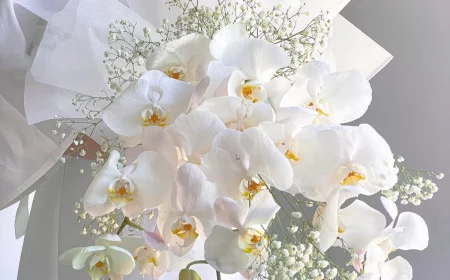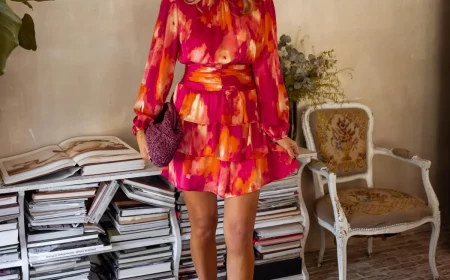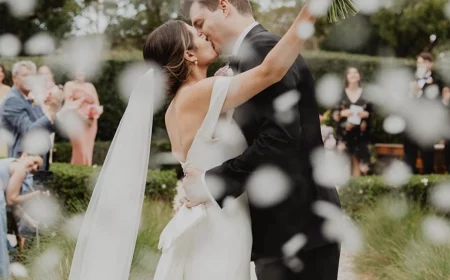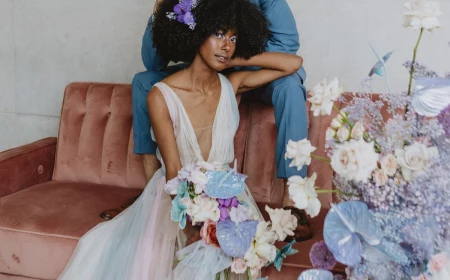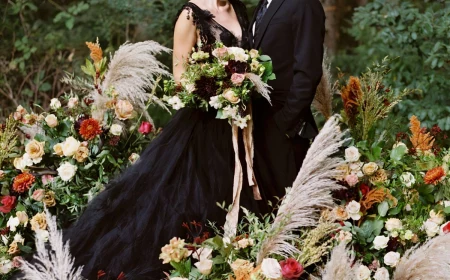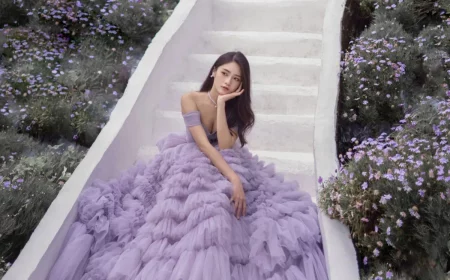More Than Sparkle: A Jeweler’s Real Talk on Picking an Engagement Ring That Lasts
After spending decades hunched over a jeweler’s bench, you see it all. The trends, the fads… they come and go. But what never changes is the look on someone’s face when they’re about to choose an engagement ring. It’s this perfect mix of excitement and sheer terror. They usually slide a phone across the counter and ask for something “unique.”
In this article
My first question is always the same: “Tell me about the person who will wear this every single day.”
Because let’s be real, an engagement ring isn’t just a pretty thing to be worn on special occasions. It’s a daily companion. It has to survive hand-washing, accidental knocks against countertops, and a whole lifetime of wear and tear. The classic diamond isn’t just a marketing triumph; its popularity is rooted in pure, practical physics. But that absolutely does not mean it’s your only good option.
So, think of this as the conversation we’d be having if you were sitting right here with me. We’re going to skip the fleeting fads and talk about what really matters: durability, true beauty, and solid craftsmanship. We’ll explore some incredible gems you might not have considered, get into the metals that hold them, and understand what makes a ring built to last. This is about making a smart choice for a symbol that means the world.
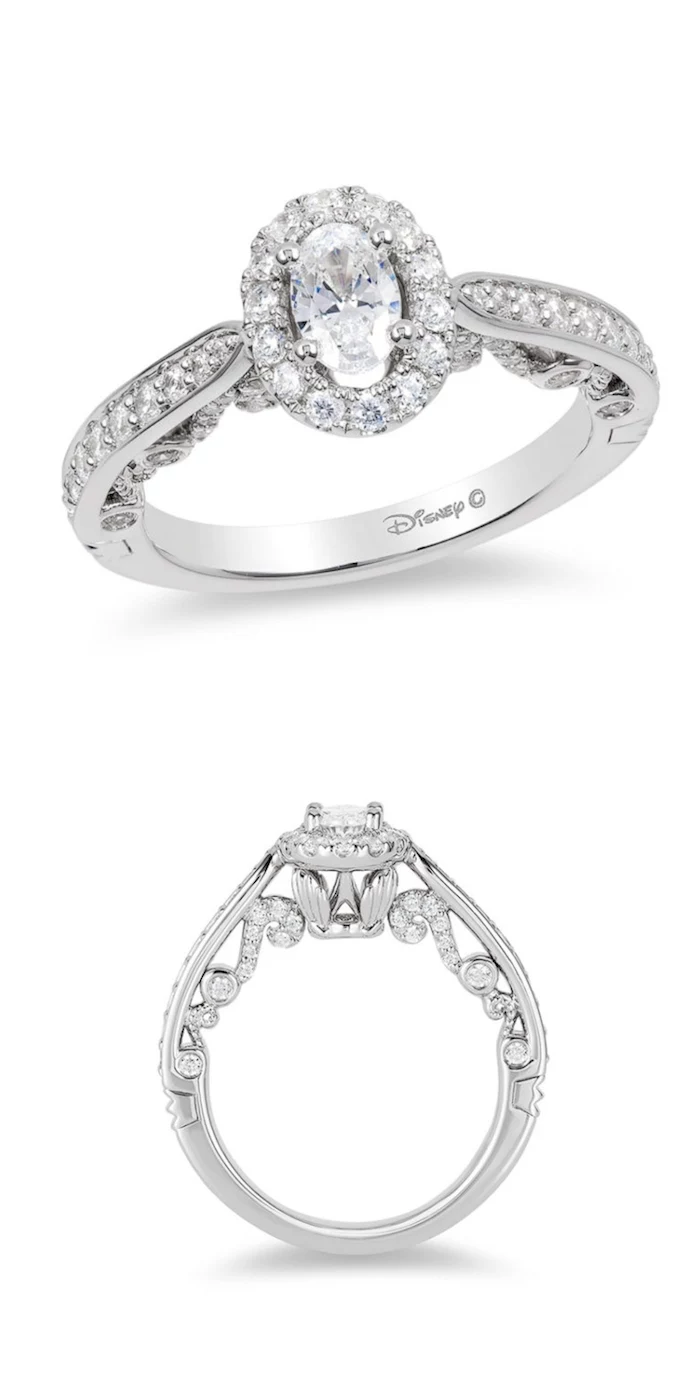
First Things First: Why Durability is Non-Negotiable
Before we even get to the fun stuff like color and sparkle, we have to talk about hardness. In my world, this is the most important factor, hands down. We use the Mohs scale, which ranks gems from 1 (super soft talc) to 10 (diamond). It’s a simple test of what can scratch what.
Think about it. The dust floating around in the air is mostly quartz, which sits at a 7 on the Mohs scale. This means any gem with a hardness below 7 is going to get scuffed up and lose its shine over time, just from existing. It’s a slow, sad process. This is exactly why I get a little nervous when someone wants an opal (5.5-6.5) or moonstone (6-6.5) for a ring they’ll wear 24/7. They’re gorgeous, but you have to be prepared for the high maintenance and risk.

Here’s the breakdown I give my clients:
- 10: Diamond. The undisputed champ. It’s the hardest natural material on earth, and nothing but another diamond can scratch it. This is our gold standard for durability.
- 9: Corundum (Sapphire & Ruby). These are my top recommendation for a diamond alternative. They’re incredibly tough and resist scratches from almost anything you’ll encounter in daily life. An excellent, practical choice.
- 8-8.5: Spinel & Topaz. Both are very hard and durable options. Spinel is a fantastic, often-overlooked hero in the gem world.
- 7.5-8: Beryl (Emerald, Aquamarine, Morganite). Definitely hard enough for rings, but they often need a little extra TLC and a more protective setting. Emeralds, in particular, tend to have natural inclusions that can make them a bit more fragile.
- 7: Quartz (Amethyst, Citrine) & Tourmaline. This is basically my cutoff for a frequently worn ring. At a hardness of 7, they’re fighting a constant battle with dust, so their polish can dull over the years.
Oh, and it’s important to know that hardness (scratch resistance) and toughness (resistance to chipping) are two different things. A diamond is the hardest, but you can still chip it with a hard knock along its grain. Meanwhile, jade has a lower hardness (6.5-7) but is unbelievably tough because of its interlocking crystal structure. It’s not about finding a perfect stone, but the right stone for your life.

My Go-To Diamond Alternatives
When someone wants color and personality without sacrificing peace of mind, I steer them toward these gems. I’ve set these in countless rings, knowing they’ll still look fantastic decades from now.
The A-Listers: Sapphire and Ruby (The Corundum Family)
If you want color, my first suggestion is almost always sapphire or ruby. They’re the same mineral, just with different trace elements giving them their color. Red corundum is ruby; every other color is a sapphire.
They sit at a 9 on the Mohs scale, making them second only to diamond in the durability department. While most people think of blue, sapphires come in a whole rainbow of “fancy” colors—pink, yellow, green, and the stunning pinkish-orange known as Padparadscha. Rubies are rarer, especially in large sizes, thanks to the chromium that makes them red. The vast majority of these stones are heat-treated, which is a permanent, stable process to improve their color and clarity. It’s a completely standard practice, and any honest jeweler will tell you upfront. Untreated stones of high quality come with a serious price jump.
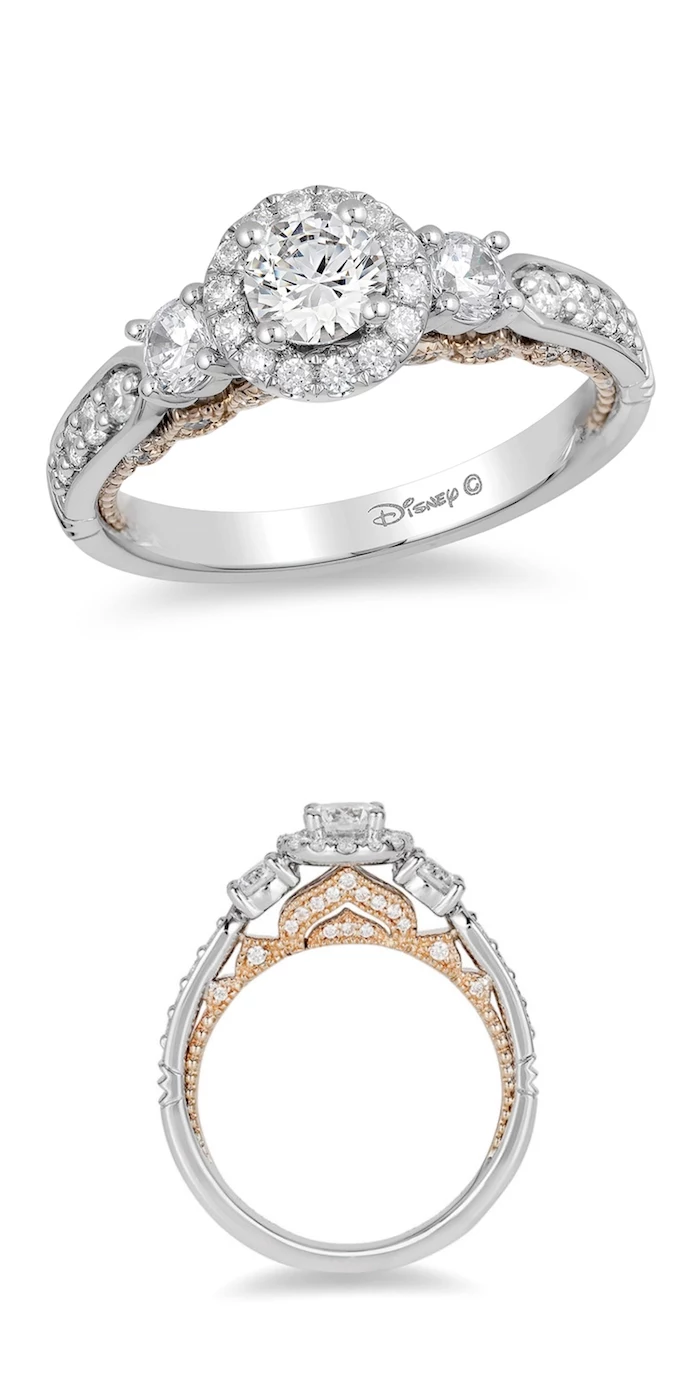
The Beryls: Emerald, Aquamarine, and Morganite
The beryl family is wonderful, but it requires a more honest conversation. With a hardness of 7.5 to 8, they are solid, but they just aren’t as tough as a sapphire.
- Emerald: That iconic green is intoxicating. But most emeralds have internal fractures—their “jardin” or garden. For an emerald, I always recommend a bezel setting, where a rim of metal protects the entire edge of the stone.
- Morganite & Aquamarine: These are the pink and blue beryls. They are usually much cleaner than emeralds, making them tougher. Morganite has been hugely popular, but a heads up: its pale color shows dirt and hand lotion like crazy. It needs frequent, gentle cleaning to avoid looking cloudy. Aquamarine is a fantastic, classic choice that holds its shine really well.
The Underdogs: Spinel and Tourmaline
Honestly, some of the best choices are the ones you haven’t heard of. I love showing these to clients who want something truly special.
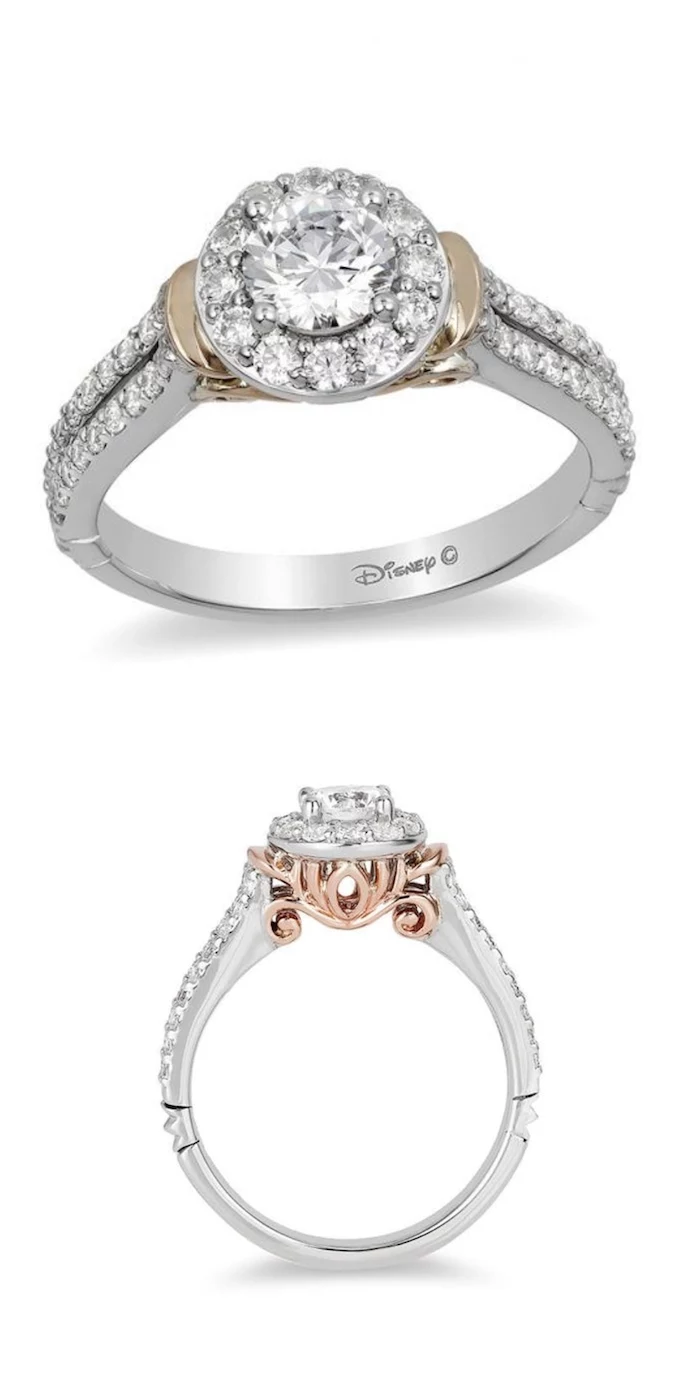
- Spinel: For ages, spinel was mistaken for ruby and sapphire. It’s a workhorse of a gem with a hardness of 8, brilliant sparkle, and it usually comes with no treatments at all. And the value? It’s amazing. For perspective, a high-quality 1-carat blue sapphire might cost you between $2,000 and $5,000, while a visually similar cobalt spinel could be in the $800 to $1,500 range. That’s real value!
- Tourmaline: This gem is a true chameleon, coming in more colors than any other. Its hardness is 7 to 7.5, so it’s on the edge of what I’d suggest, but it’s still a great option in the right setting. Its polish might soften over a few decades, but many find its unique character more than worth it.
Let’s Talk Lifestyle: Who is Actually Wearing This Ring?
The best ring isn’t just about the stone; it’s about how it fits into a life. I always ask my clients to think about the daily routine of the person who will wear it.
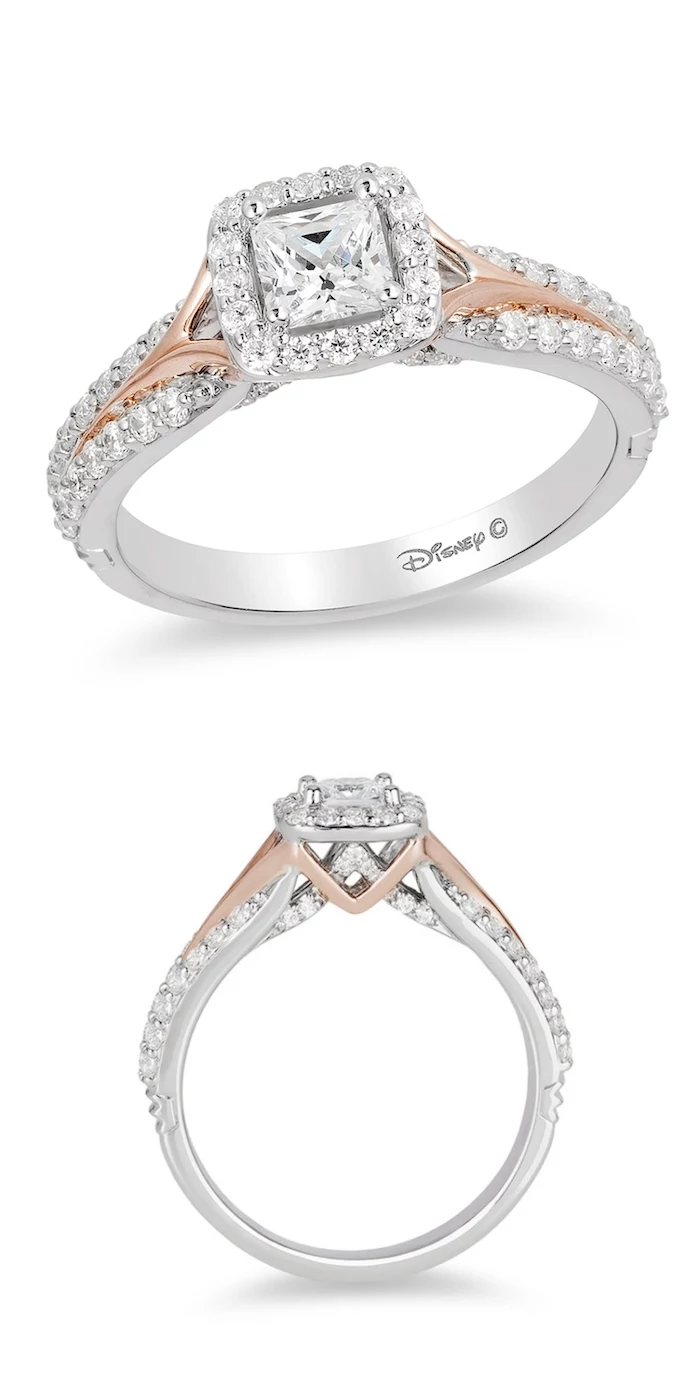
- For the Office Pro or Low-Key User: If your days are spent mostly at a desk or in less hands-on environments, you can get away with more delicate designs, like a classic prong setting. You have more flexibility with stones, but I’d still stick to the 7.5+ hardness range for peace of mind.
- For the Hands-On Creative or Parent of a Toddler: Are you a painter, a potter, a chef, or constantly chasing a little one? You need durability, period. I’d strongly guide you toward a sapphire or spinel. And for the setting, a bezel or semi-bezel is your best friend. It wraps the stone in a protective metal hug, preventing snags and chips.
- For the Outdoor Adventurer or Gym Enthusiast: If you’re always hiking, climbing, or lifting weights (though you should take your ring off for this!), you need maximum security. A low-profile bezel setting in platinum is the way to go. It’s as close to bomb-proof as a fine piece of jewelry can get.
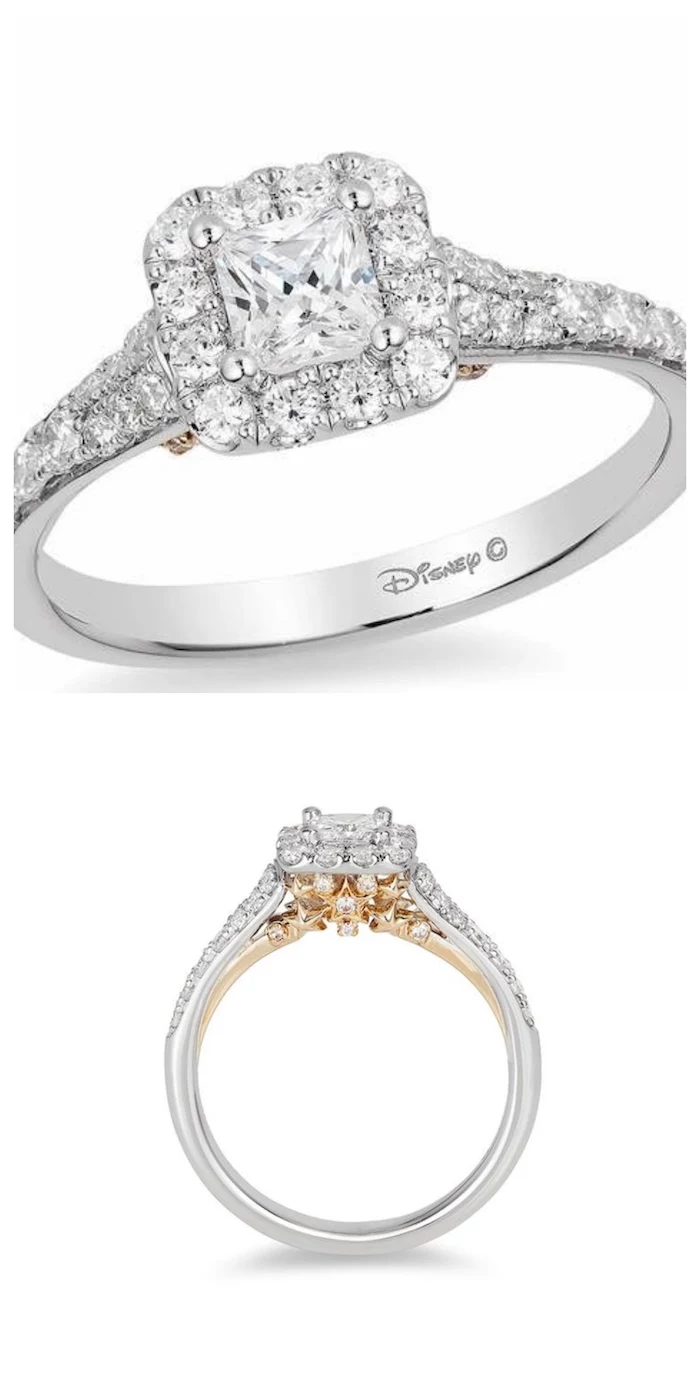
The Metal Matters: Picking the Right Foundation
The band does more than just look pretty. It’s the ring’s skeleton. Each metal has its own personality, and I’ve spent thousands of hours working with them.
Gold: The Timeless Classic
Gold’s purity is measured in karats. Pure 24k gold is way too soft for rings, so we mix it with other metals to make it stronger.
- 14k vs. 18k: This is a big question. 18k gold is 75% pure, so it has a richer color, but it’s softer. 14k gold (58.5% pure) is stronger. For a daily-wear ring, especially one with delicate prongs, I almost always suggest 14k. It’s a much better balance of beauty and durability.
- White Gold: This is yellow gold mixed with white metals. To get that bright, silvery shine, it’s plated with rhodium. And I’m always direct about this: rhodium plating is NOT permanent. It will wear off in 1 to 3 years. Plan on this! Re-plating is standard maintenance and usually costs between $50 and $100 at a local jeweler.
- Rose Gold: That warm, pinkish color comes from adding copper to the mix. The copper actually makes rose gold very durable, often even tougher than yellow gold.
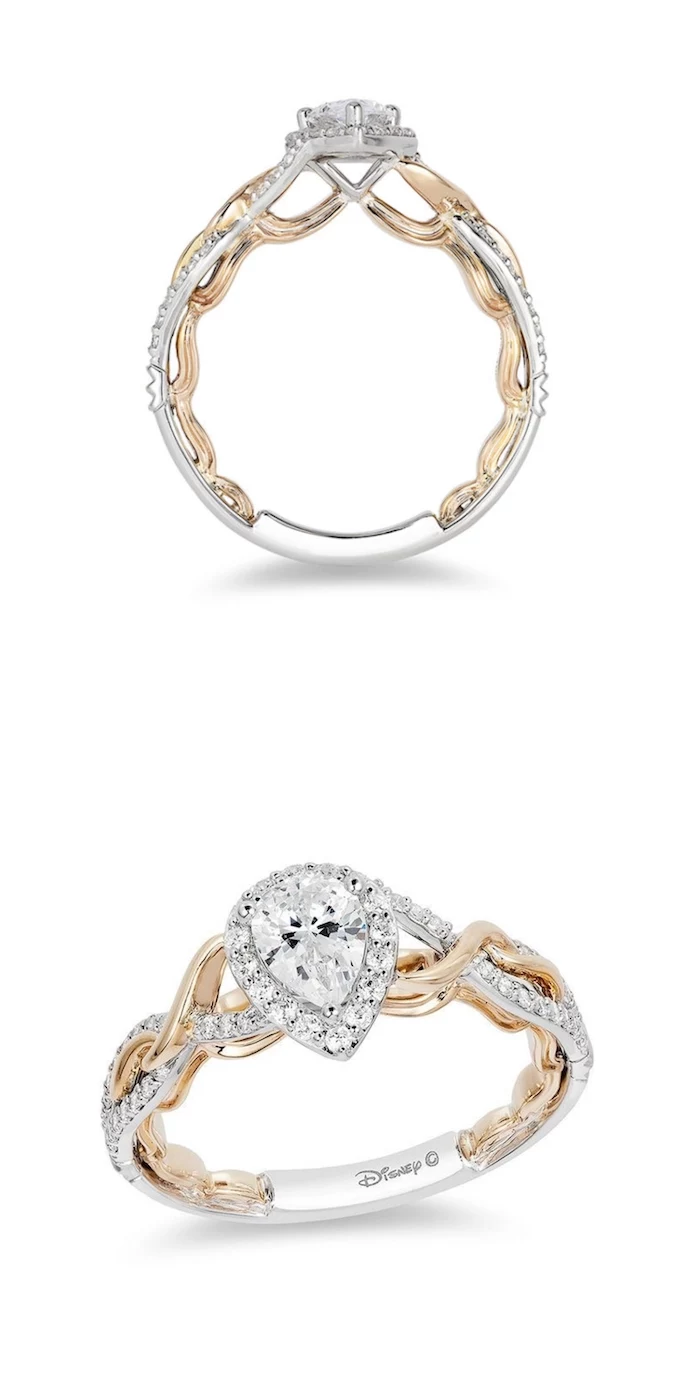
Platinum: The Premium Standard
When someone wants the absolute best for durability and low maintenance, I point them to platinum. It’s denser and heavier than gold, giving it a satisfying, substantial feel on the hand. It’s naturally white, so it never needs plating. Plus, it’s hypoallergenic, making it the safest choice for sensitive skin.
Here’s the cool thing about how it wears: when platinum gets scratched, the metal just gets moved around. It develops a soft, matte finish over time called a patina, which many people love. To give you a real-world idea on cost, a simple band in 14k gold might be around $500, while the same design in platinum could be closer to $900 because it’s denser and rarer.
The Custom Journey: How Your Ring Comes to Life
Creating a custom ring is a partnership. It’s a process that ensures every single detail is exactly right. Here’s a peek behind the curtain.
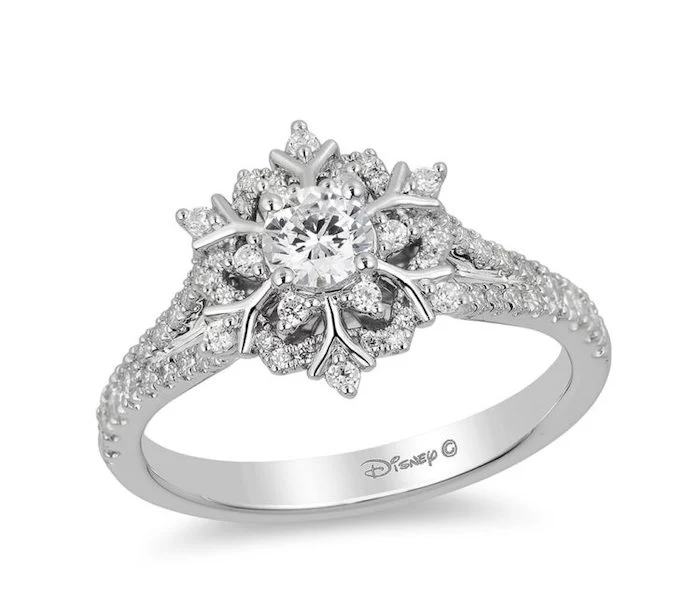
- The Consultation: We just talk. I want to know about your partner, your budget, your ideas. This is where we figure out what’s most important. For your budget, would you prefer a larger 1.5-carat aquamarine or a slightly smaller, more durable 1.2-carat sapphire? These are the kinds of trade-offs we discuss.
- Sourcing the Stone: This is the heart of the ring. I work with a small network of trusted dealers. For any significant stone, I insist on a report from a top gem lab. It’s your stone’s birth certificate.
- Design & Model: We go from sketches to a 3D computer model. Then, I’ll often 3D print a wax version of the ring. You can actually hold it, try it on, and feel the proportions. This step is a game-changer for preventing surprises.
- Casting & Finishing: Once you approve the model, we cast it in your chosen metal. Then the real handiwork begins at my bench—filing, sanding, setting the stone, and hours of polishing. The whole process, from our first chat to the finished ring, usually takes between 6 and 12 weeks.
By the way, here’s a quick list of what you should bring to your first consultation to make it super productive:
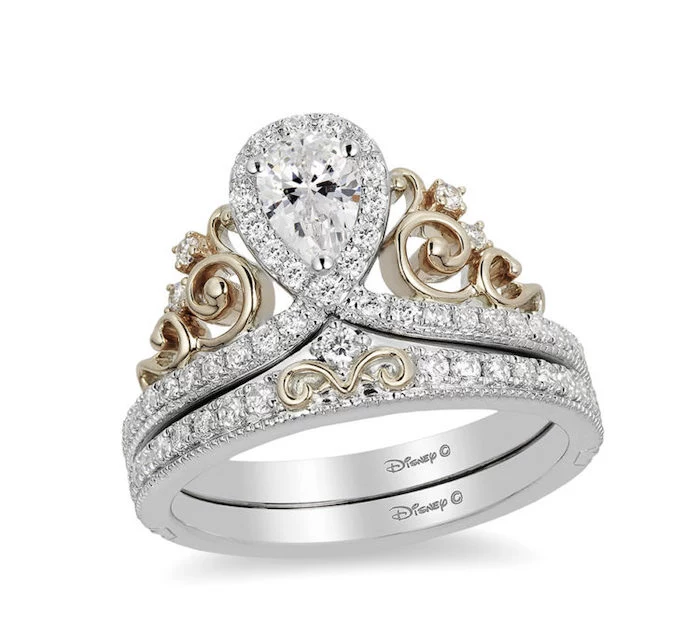
- Your ballpark budget (it helps us know what’s possible!)
- A few inspiration photos (Pinterest is great for this)
- Notes on your partner’s style (Modern? Vintage? Minimalist?)
- Their ring size (if you can sneakily find it!)
Protecting Your Ring for the Long Haul
My job isn’t done when the ring leaves my shop. A well-made ring should last for generations, but only with some simple, consistent care.
- Get It Insured. Seriously. Your homeowner’s policy might not cover it fully. I always tell my clients to look into a dedicated jewelry insurer—companies like Jewelers Mutual are built for this. I’ll provide the detailed appraisal you’ll need.
- Clean It Gently. For most rings, a bowl of warm water, a few drops of dish soap, and a baby toothbrush are all you need. Be very careful with ultrasonic cleaners, especially for stones like emeralds.
- Know When to Take It Off. Your ring should not go to the gym, in the garden, or swimming. Heavy impacts can bend prongs, and chlorine can damage the metal alloys.
- The Annual Check-Up. Bring your ring back once a year. I’ll give it a deep clean and, more importantly, inspect the prongs under a microscope to make sure your stone is secure.
Quick tip: The Sweater Test. At home, you can gently drag your ring’s setting over a knit sweater. If it snags, you likely have a lifted prong. Get it to a jeweler for a check-up before that stone has a chance to escape!
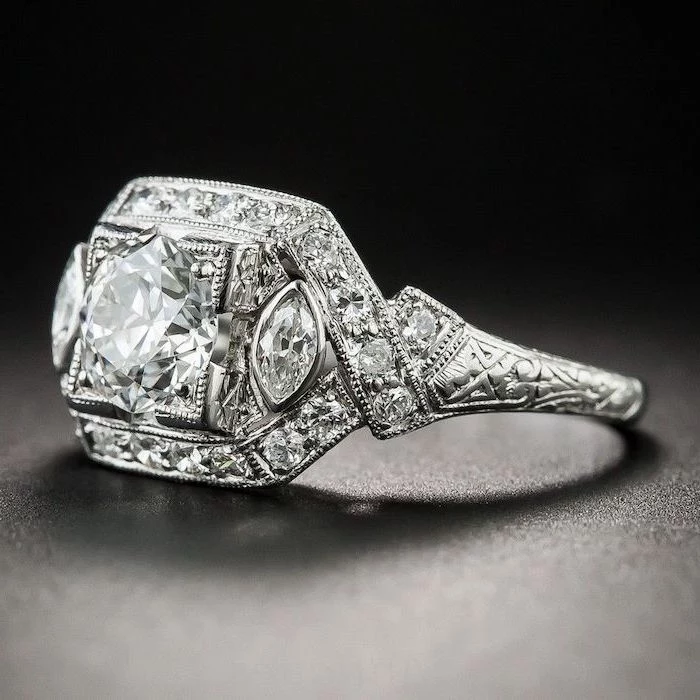
Choosing an engagement ring is a huge deal. But by looking beyond the obvious, you can find a stone and design that tells a much more personal story. When you balance beauty with the real-world facts of durability and craftsmanship, you’re not just buying jewelry. You’re commissioning a future heirloom, built to last a lifetime.
Inspiration Gallery
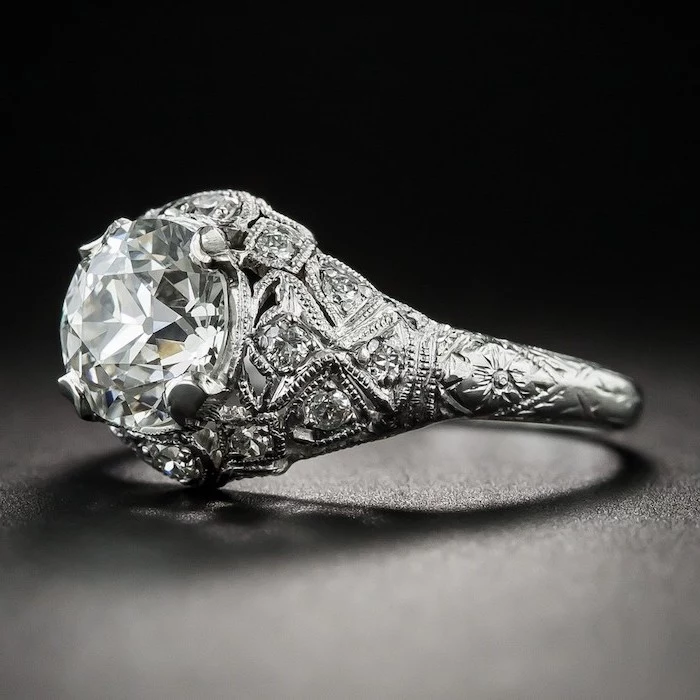
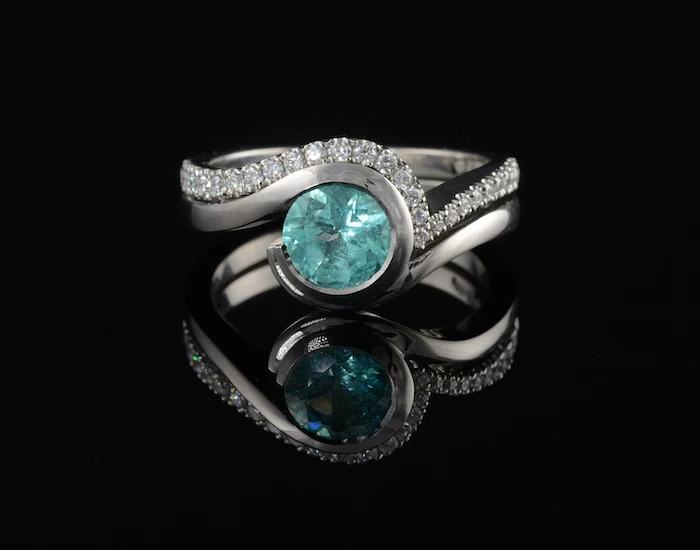
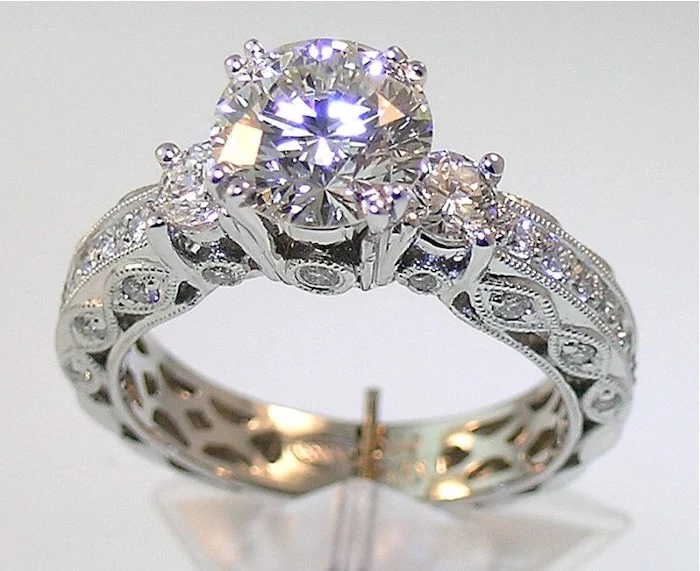
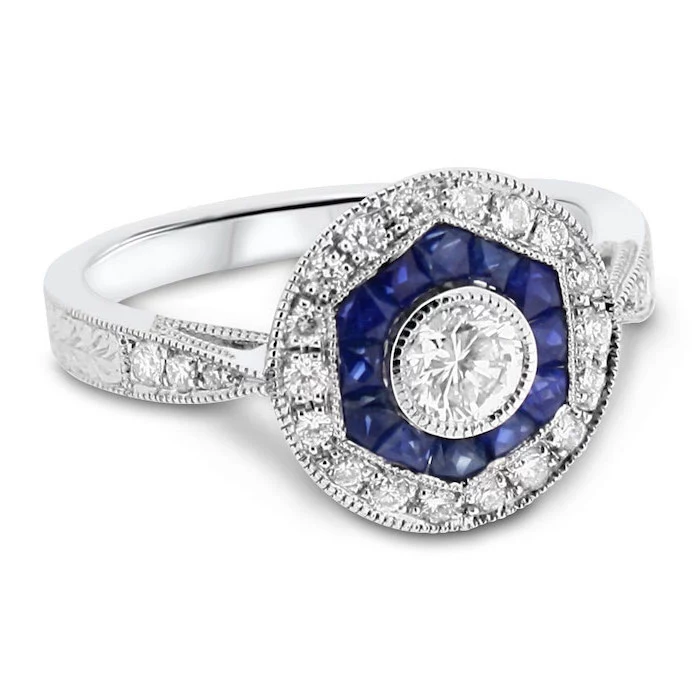
Platinum: Naturally white, extremely dense, and hypoallergenic. It develops a soft, satiny patina over time and holds stones more securely due to its strength. It is, however, more expensive and heavier than gold.
18k White Gold: An alloy of pure gold and white metals, often plated with rhodium for a brilliant white finish. This plating needs to be redone every few years to maintain its color. It’s a lighter, more budget-friendly alternative to platinum.
Ultimately, the choice is between the enduring, low-maintenance luxury of platinum and the bright, cost-effective appeal of white gold.
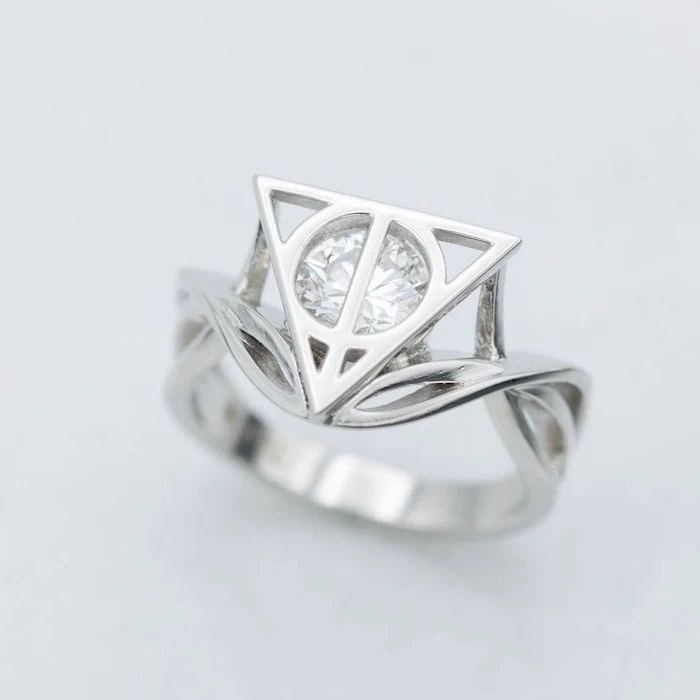
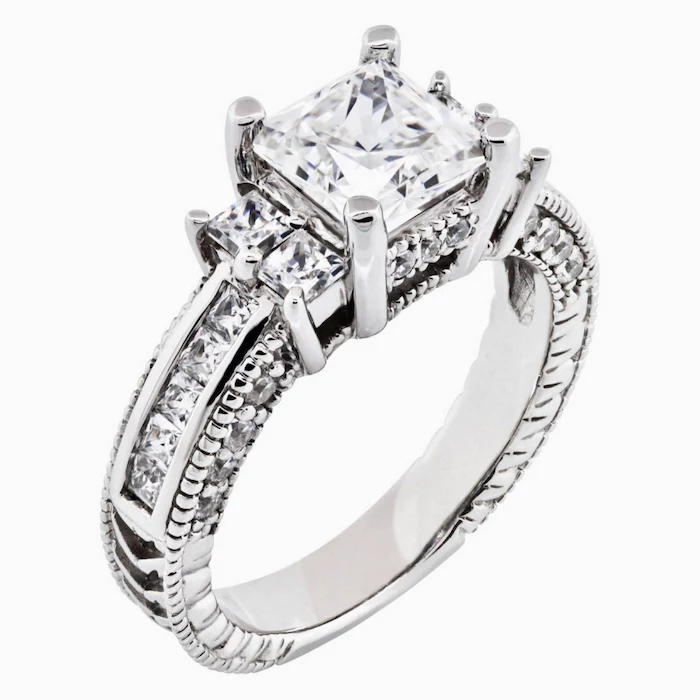
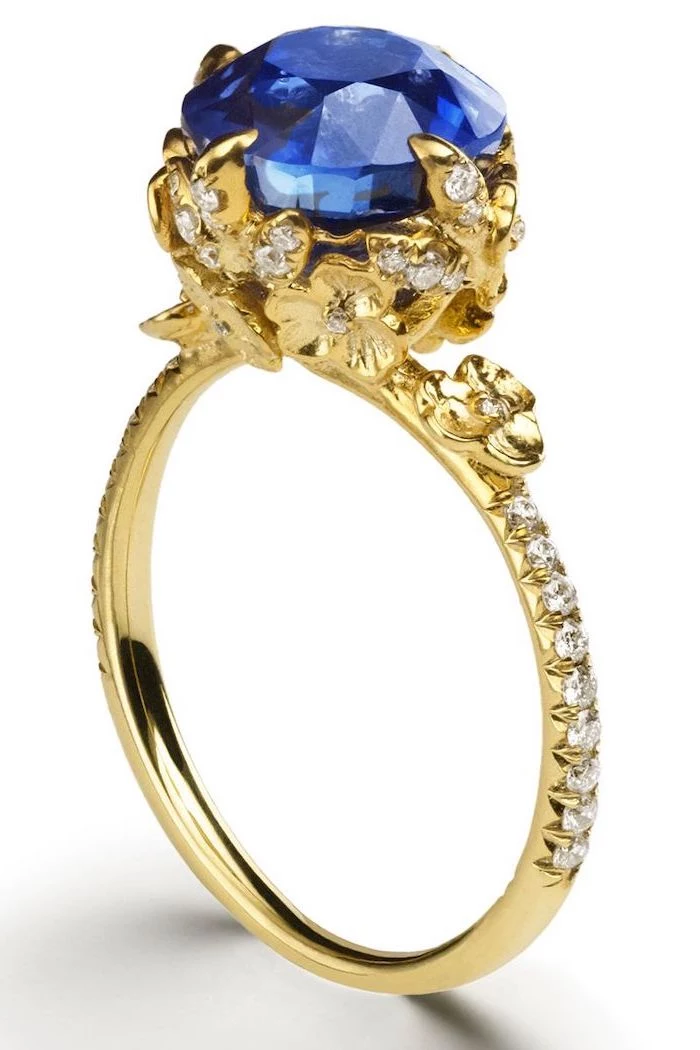
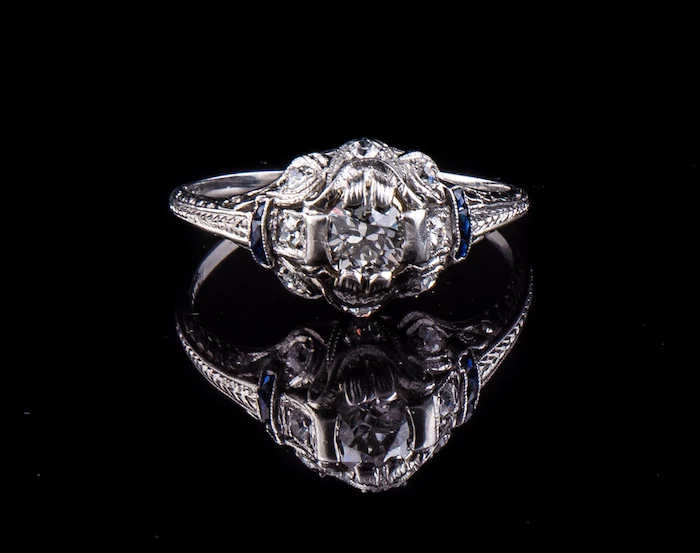
Only about 1 in 10,000 diamonds possesses a natural color vibrant enough to be graded as a ‘fancy color diamond.’
This rarity is why deep blue, pink, or canary yellow diamonds command such high prices. For those seeking color without the astronomical cost, sapphires, rubies, and emeralds offer rich, historic alternatives with excellent durability for everyday wear.
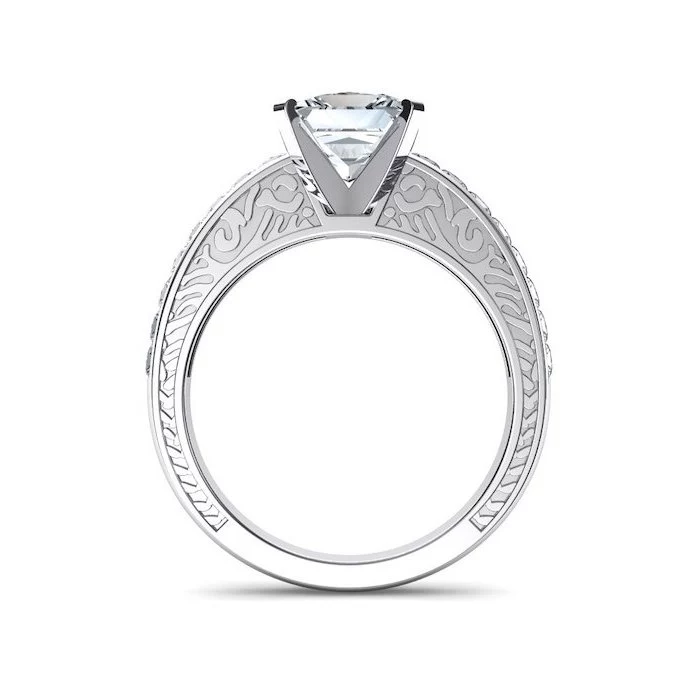
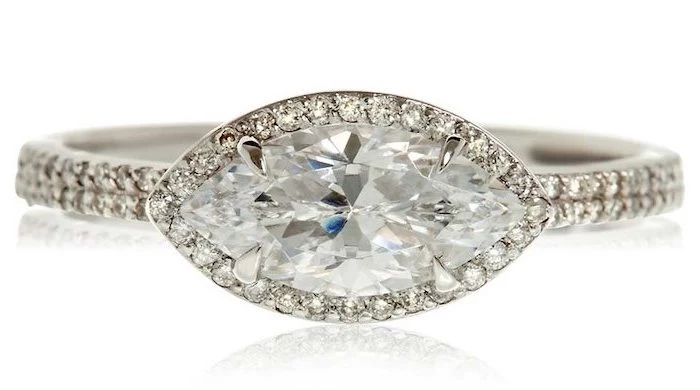
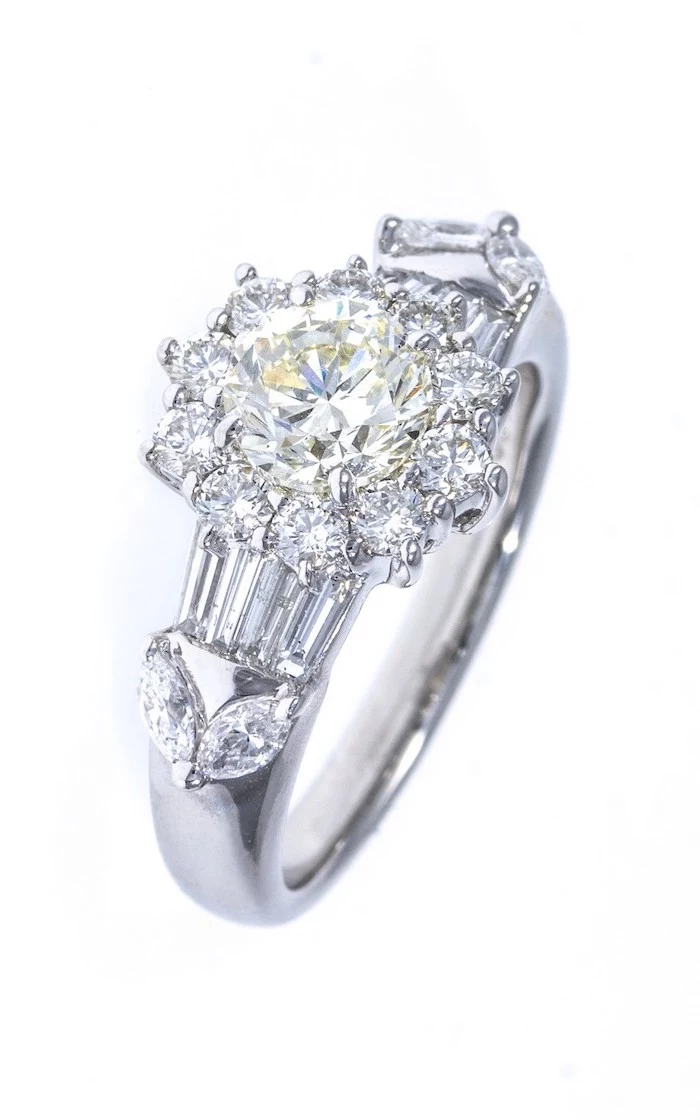
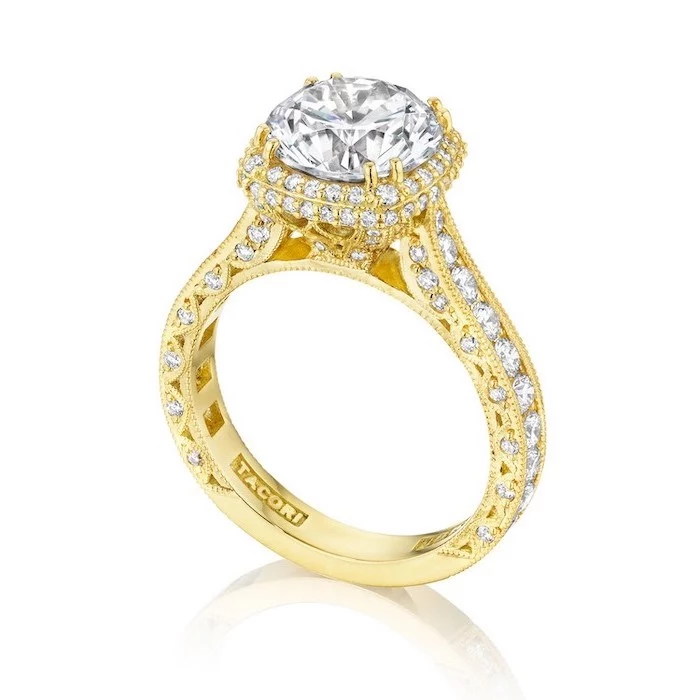
Thinking about a custom design?
Going custom is incredibly rewarding, but it’s a collaboration. Start with a clear vision: gather inspiration photos of settings, stone shapes, and metal textures you love. Be prepared to discuss your partner’s lifestyle—is she a gardener, a doctor, a graphic designer? This detail informs crucial design choices, like choosing a protective bezel setting over a high-prong one. Finally, choose a jeweler whose portfolio you admire and who listens carefully. This isn’t just a transaction; you’re co-creating a future heirloom.
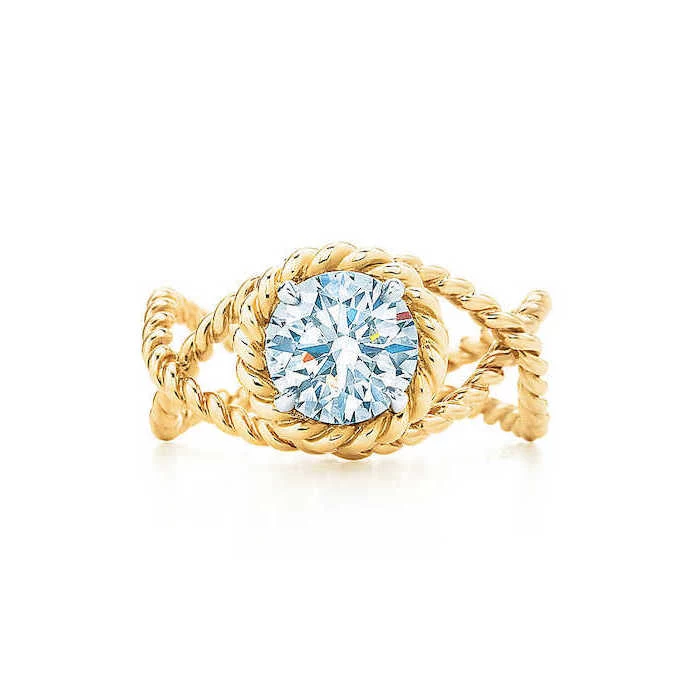

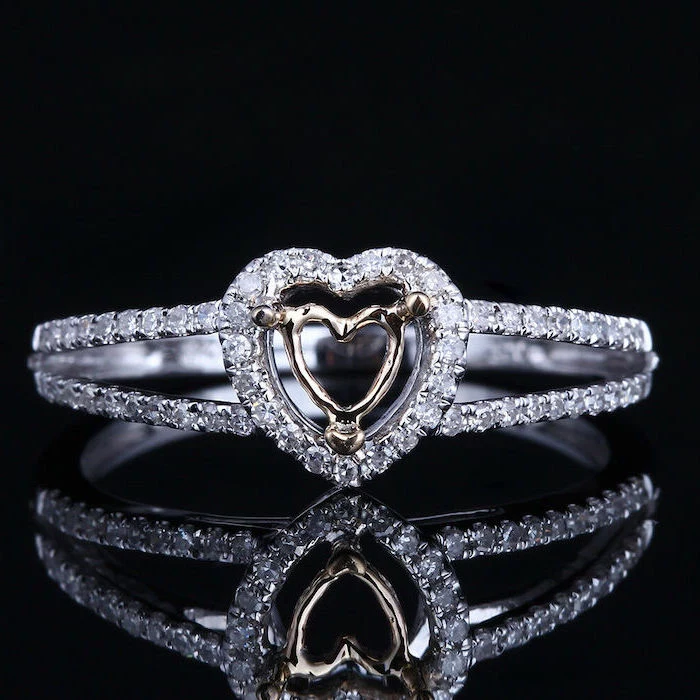
- A more substantial, three-dimensional presence on the finger.
- Enhanced sparkle, as light can enter the stone from more angles.
- A timeless look that has graced hands for centuries.
The secret? A classic six-prong setting. While a four-prong setting creates a more ‘square’ look, the six-prong ‘Tiffany’ style not only offers superior protection but also emphasizes the roundness and brilliance of the diamond.
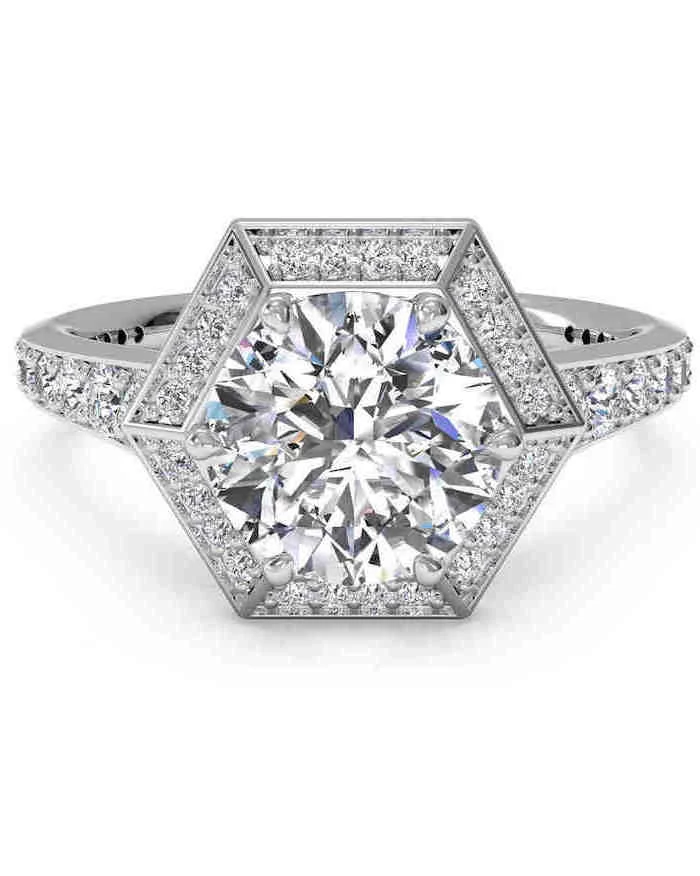
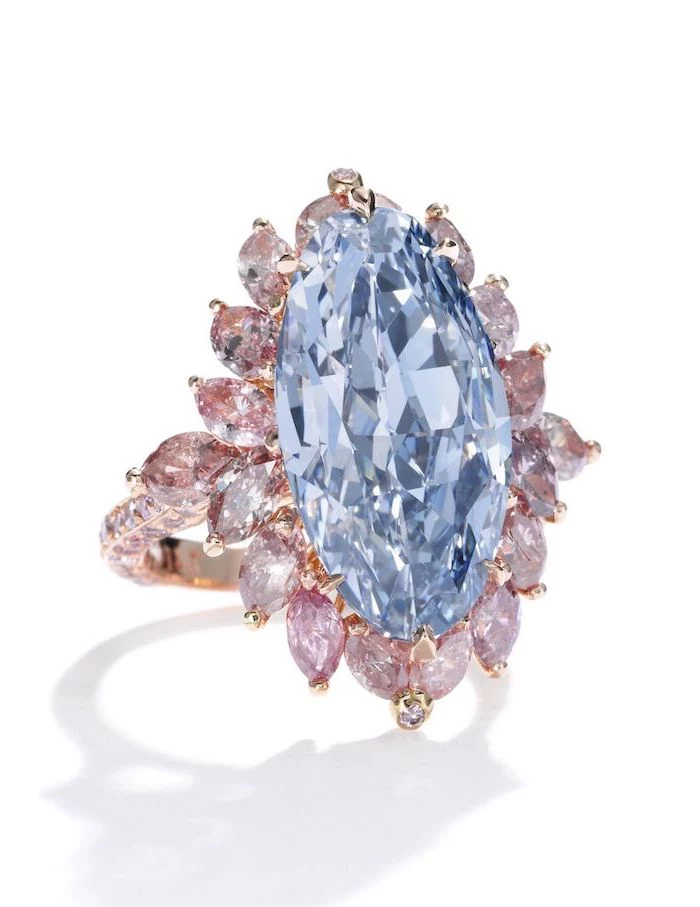
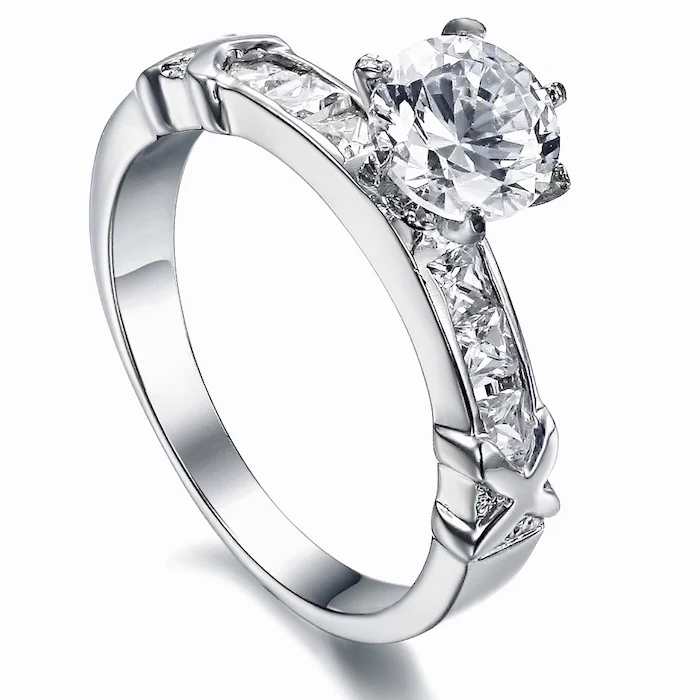
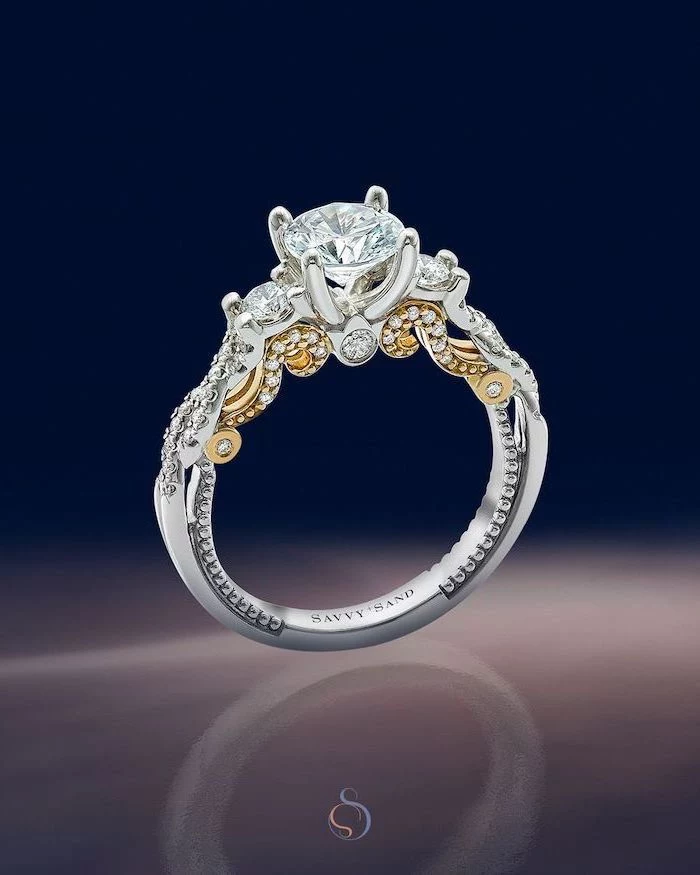
The metal’s warmth has made a major comeback. Yellow gold offers a beautiful contrast, making diamonds appear brighter and warmer. It’s particularly flattering on olive and darker skin tones. Don’t be afraid to mix it with existing white gold or platinum jewelry; the two-tone look is modern and personal.
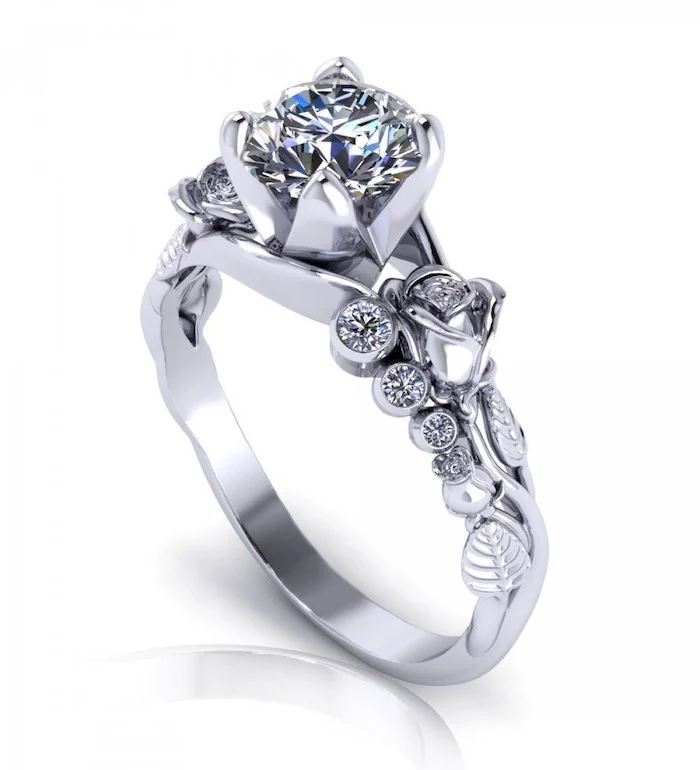
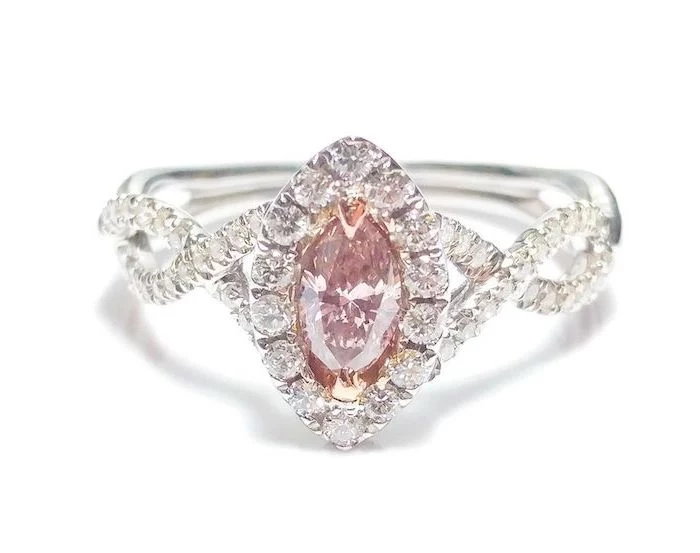
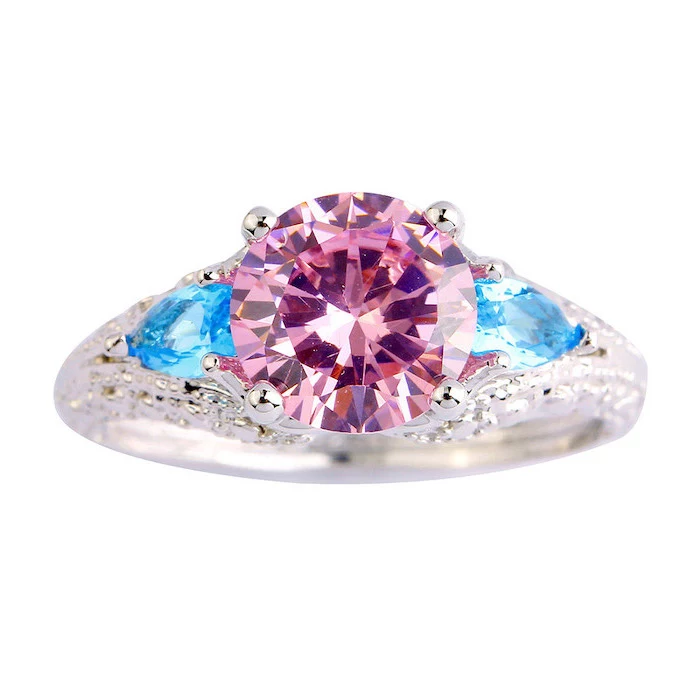
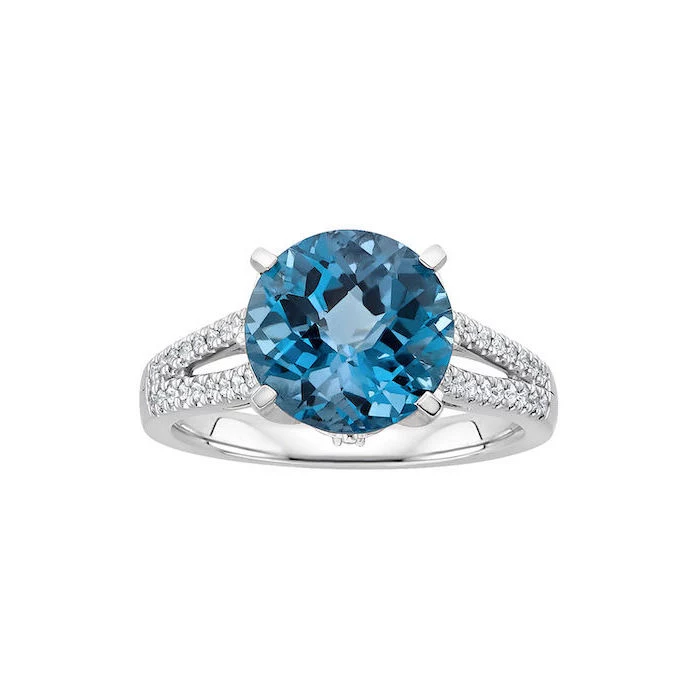
The tradition of giving a diamond engagement ring can be traced back to 1477, when Archduke Maximilian of Austria proposed to Mary of Burgundy with a ring set with diamonds in the shape of an ‘M’.
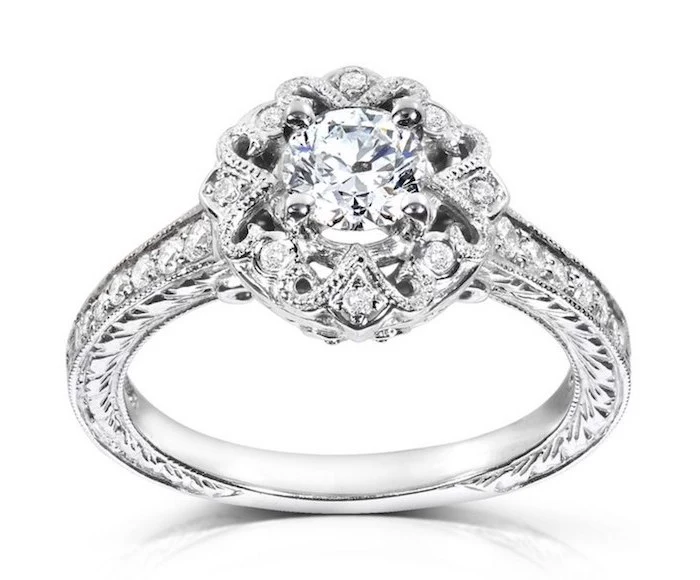
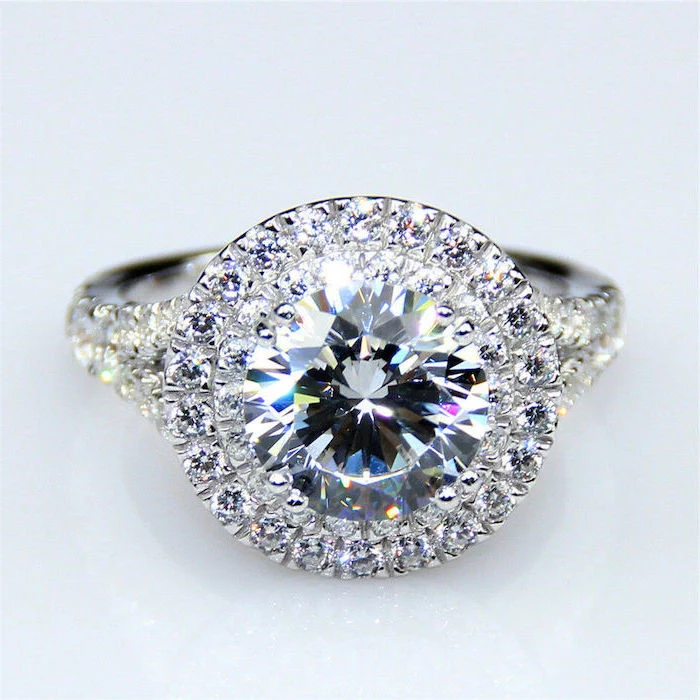
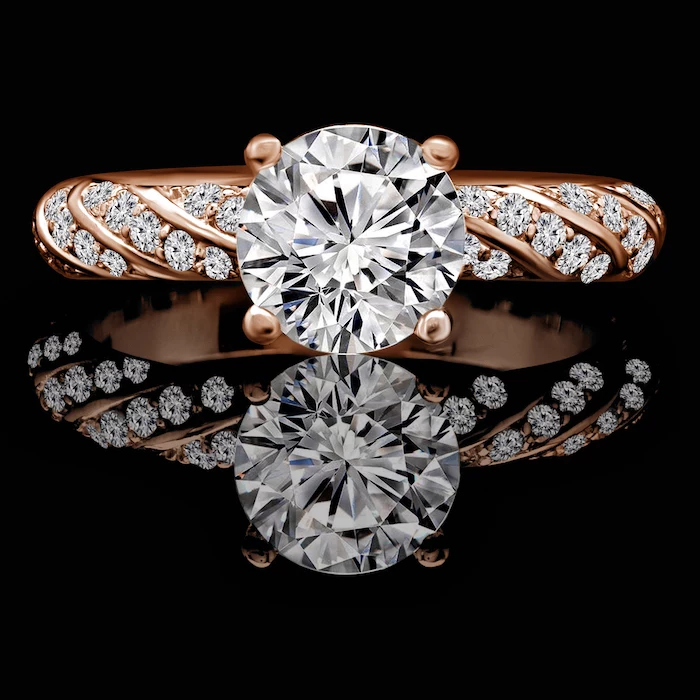
Don’t get lost in the ‘Four Cs’. For the best value, prioritize the ‘Cut’. A well-cut diamond, even with slightly lower color (like G or H) or clarity (like VS2 or SI1), will out-sparkle a poorly cut stone of higher grades. The cut is what unleashes the fire and brilliance your eye actually sees.
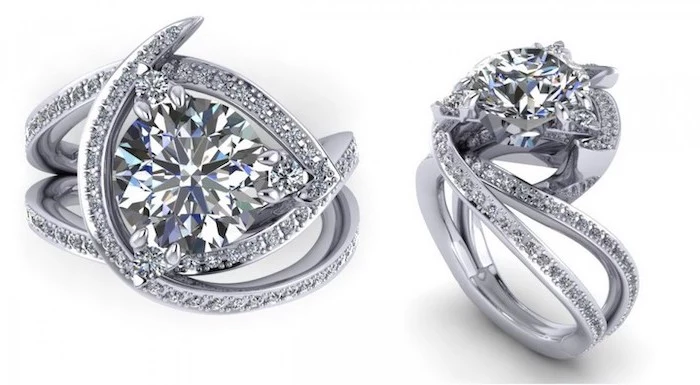
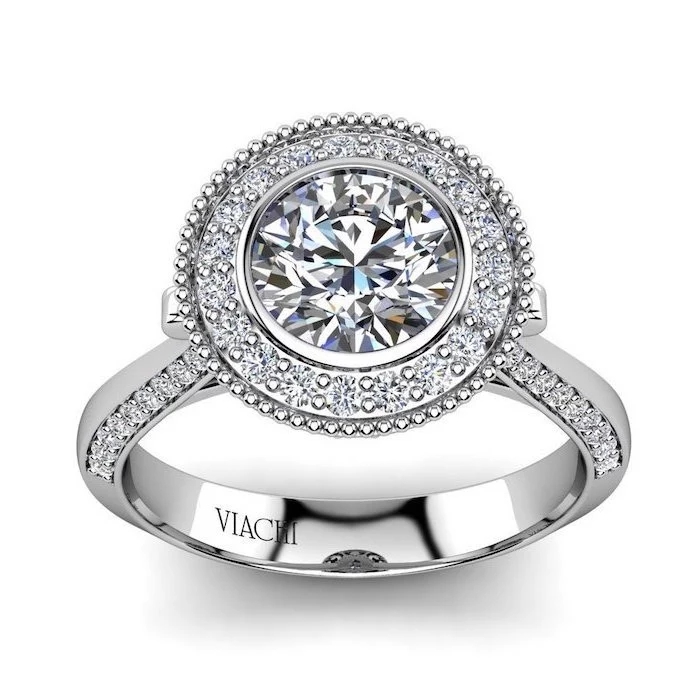
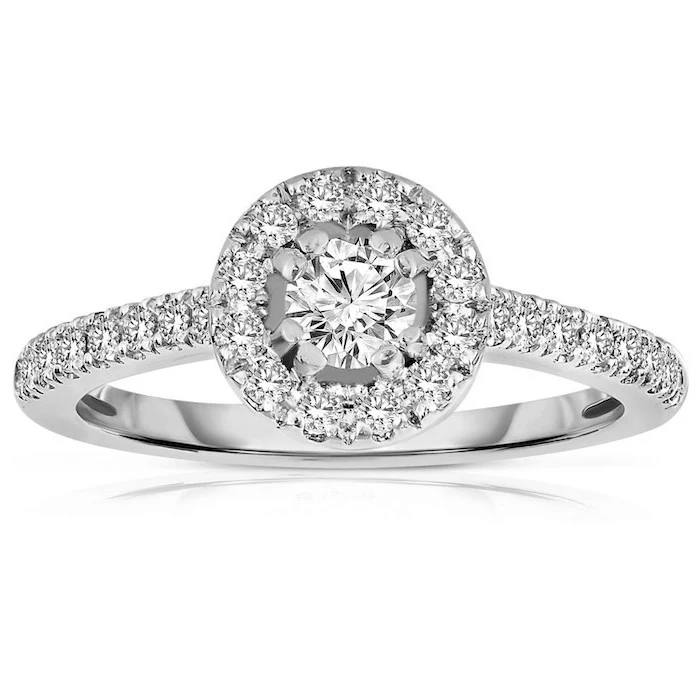
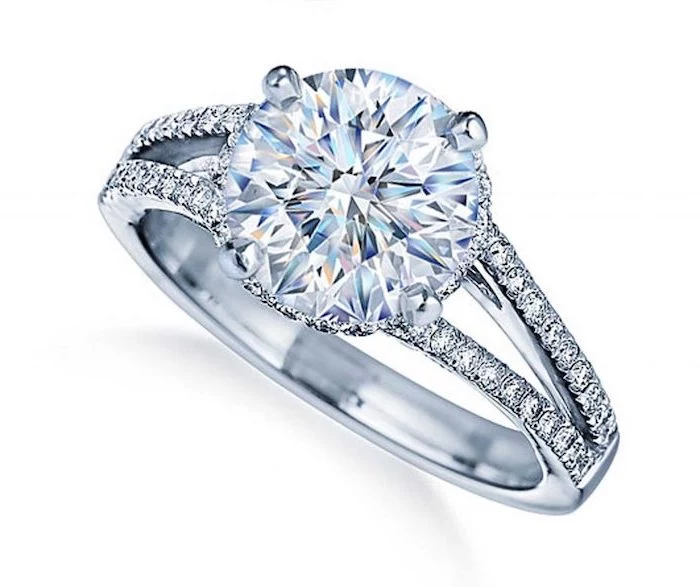
For gentle at-home cleaning that keeps your ring sparkling between professional check-ups:
- Get a bowl of warm water and a few drops of basic dish soap (like Dawn).
- Let the ring soak for 20-30 minutes to loosen dirt and oils.
- Use a very soft baby toothbrush to gently scrub behind the stone and in the crevices of the setting.
- Rinse under warm running water and pat dry with a soft, lint-free cloth.
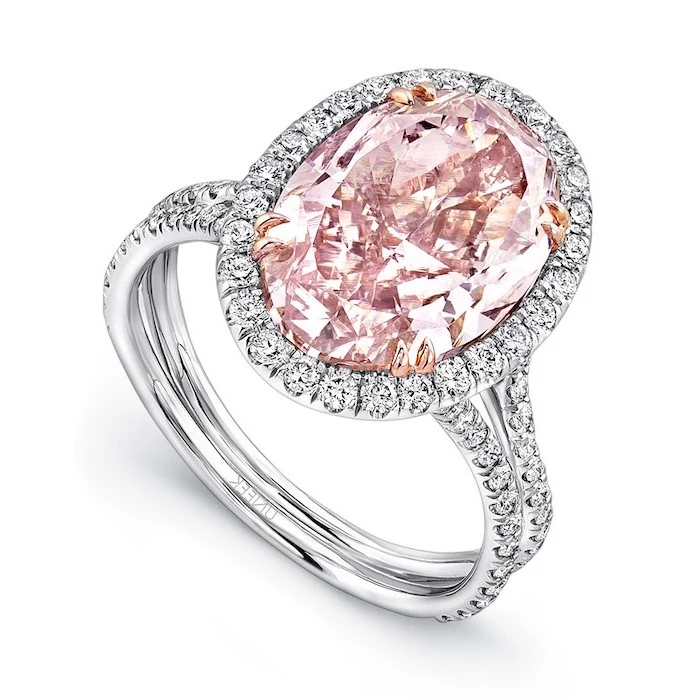
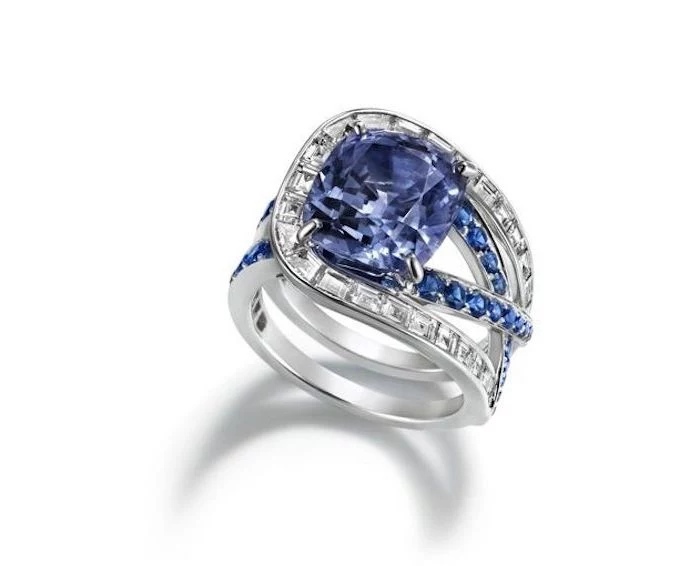
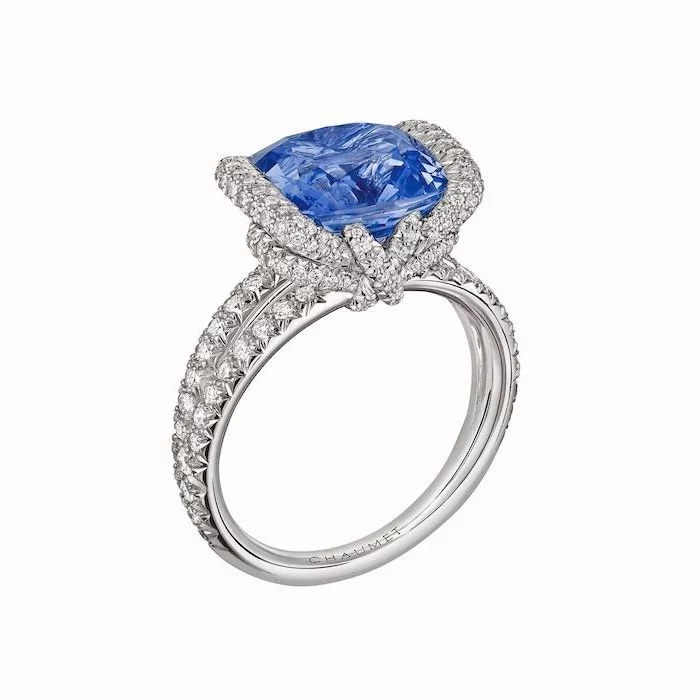
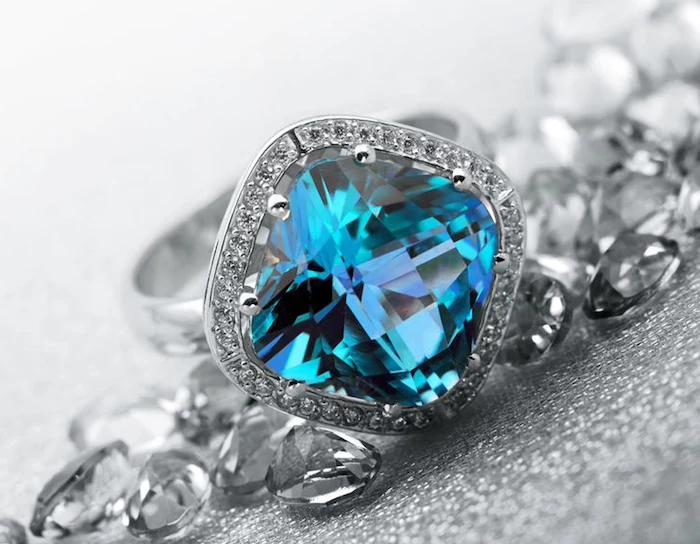
What exactly is a ‘bezel’ setting?
Unlike traditional prongs that grip a stone at specific points, a bezel setting encircles the entire perimeter of the gem with a thin metal rim. This makes it the most secure type of setting available. It’s an excellent choice for people with active jobs or hobbies, as it protects the stone’s edges from chipping and won’t snag on clothing. The look is modern, sleek, and exceptionally practical.
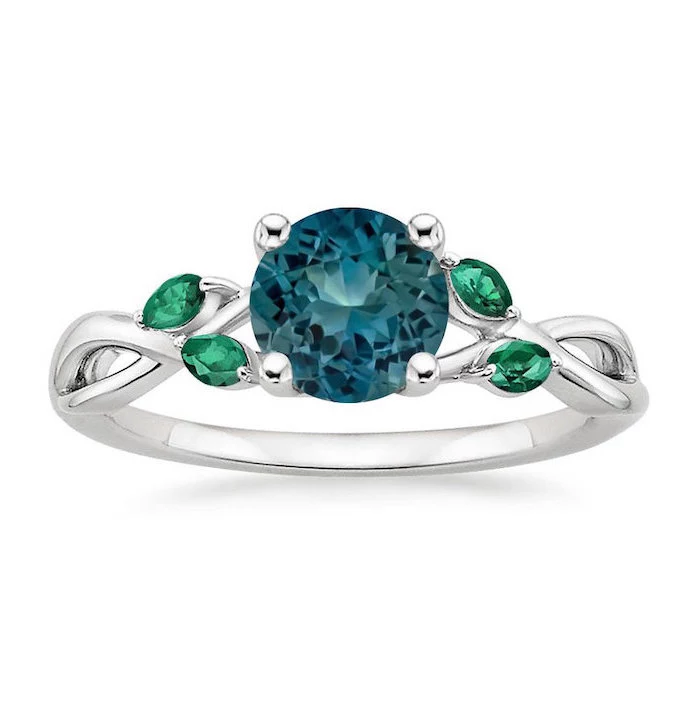

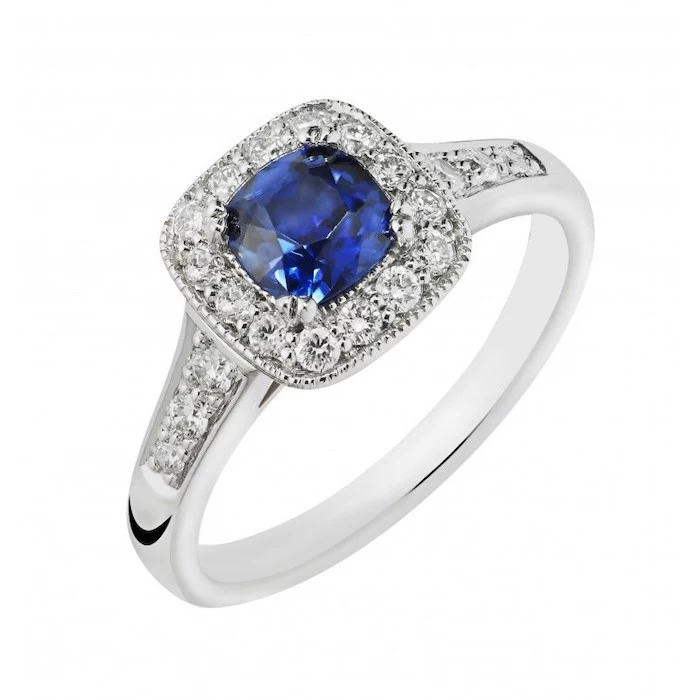
Consider the emotional gravity of using a family stone. Resetting a grandmother’s diamond or a mother’s sapphire into a contemporary design connects generations. It transforms a piece of jewelry into a piece of your family’s story, imbued with a history and love that you can’t buy off a shelf. It’s the ultimate in sustainable and sentimental design.
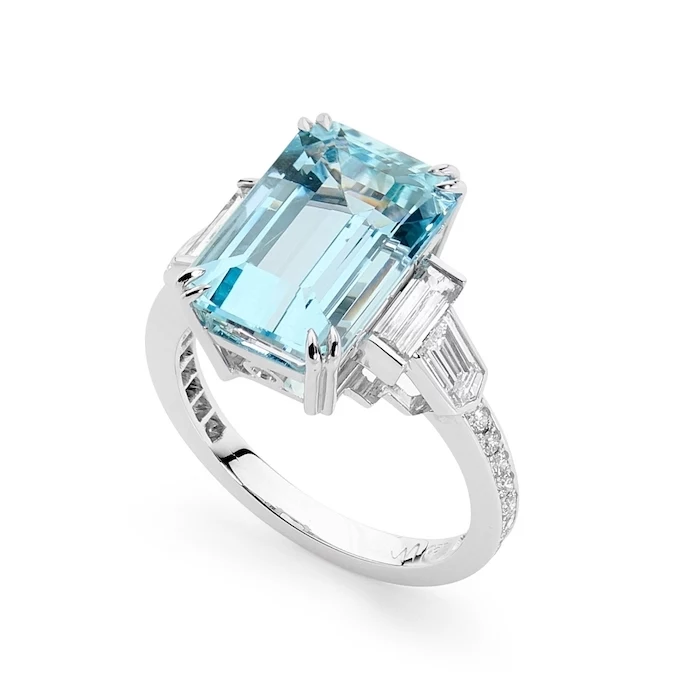
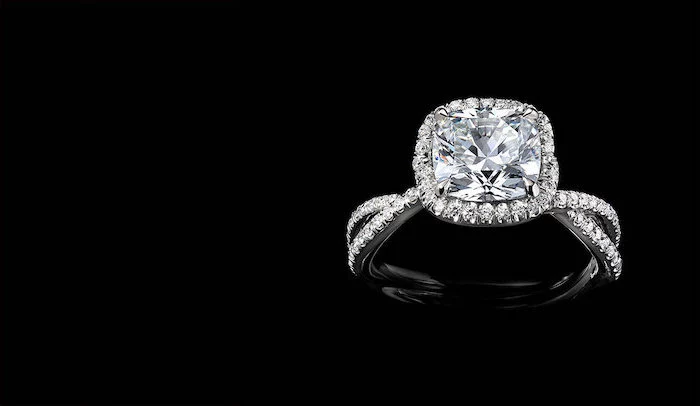
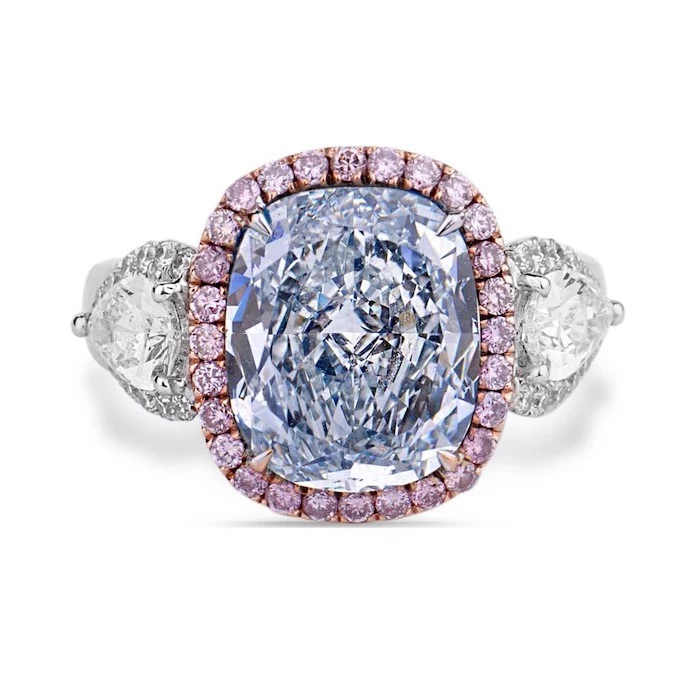
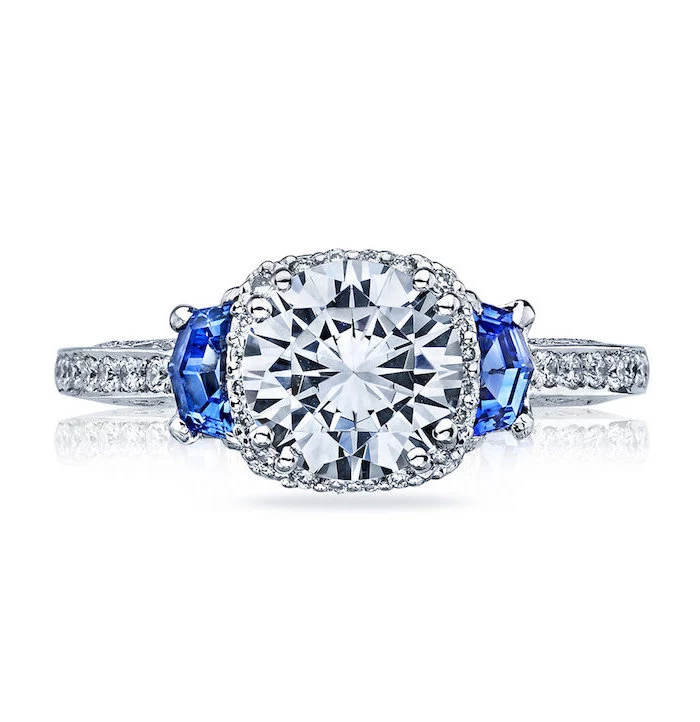
A common mistake: Choosing a dramatic, high-profile setting without considering daily life. A stone that sits very high off the finger is more prone to getting knocked against desks, doors, and countertops, increasing the risk of a bent prong or a loosened stone. A lower-profile setting is often a more practical and durable choice for long-term wear.
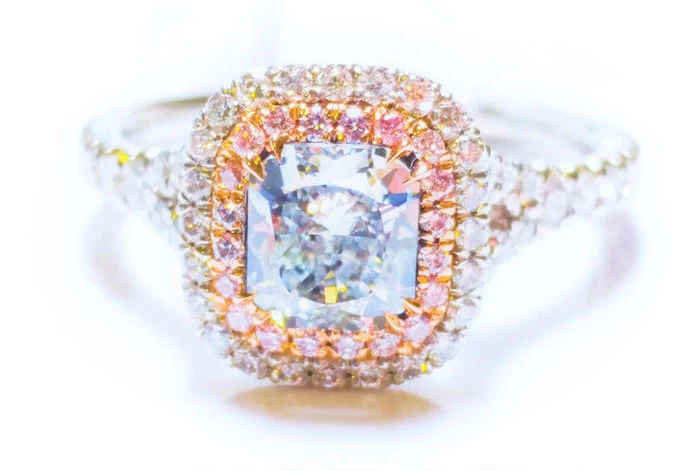

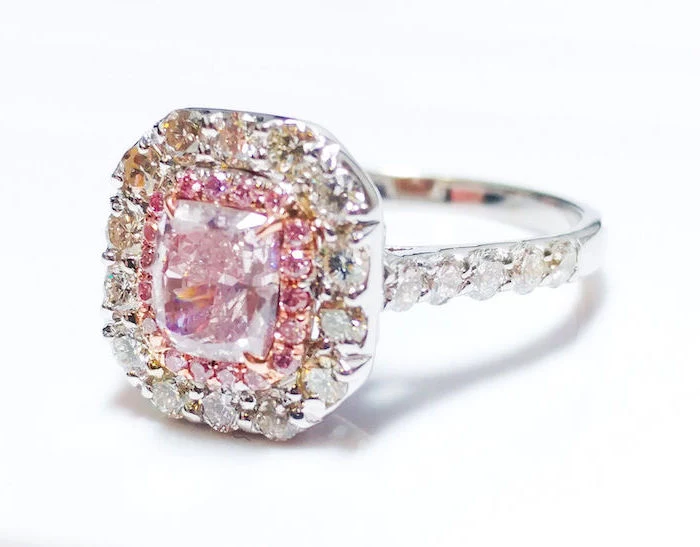
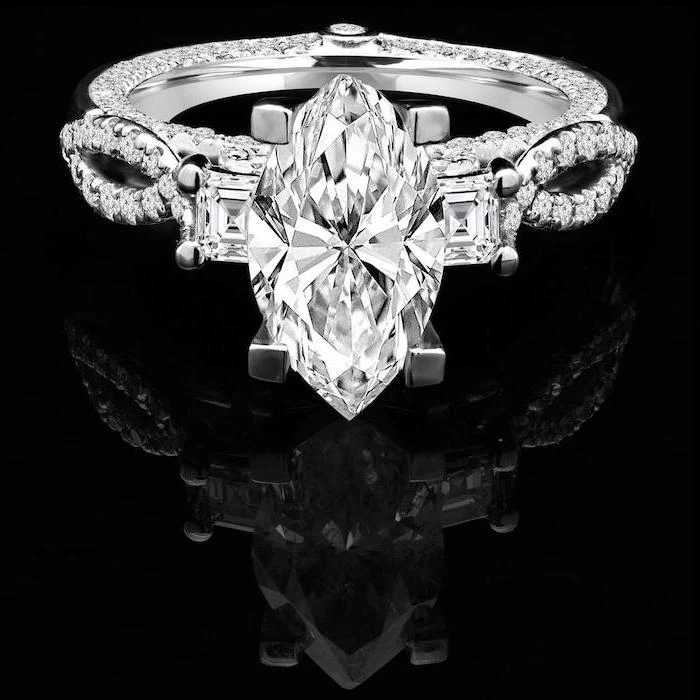
Looking for a durable, non-diamond alternative? Meet Moissanite. At 9.25 on the Mohs scale, it’s harder than any gemstone except diamond, making it perfect for daily wear. Created in a lab, it’s a cost-effective and ethical option known for its fiery, rainbow-like sparkle which is even more pronounced than a diamond’s.

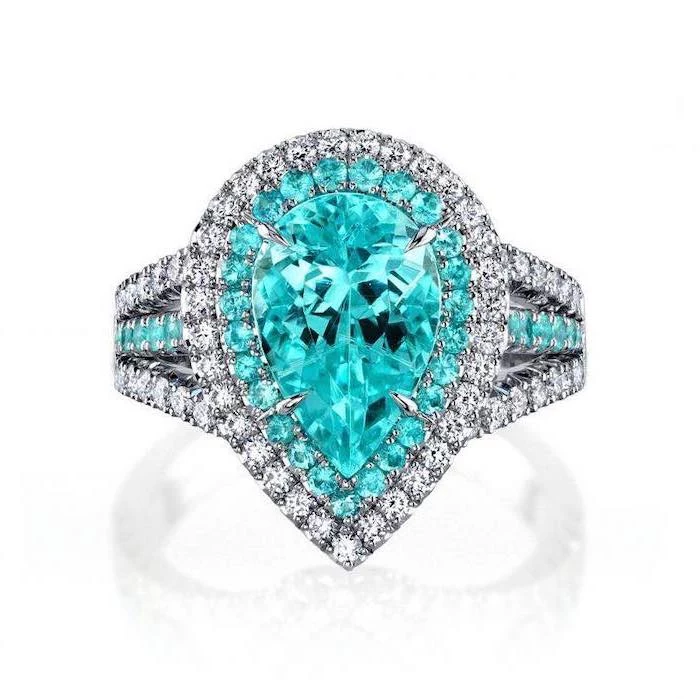

- It shows off unique, intricate details on the band.
- It creates a sophisticated, vintage-inspired feel.
- It can make the central stone appear larger.
The style? An Art Deco-inspired ring. Characterized by geometric shapes, milgrain detailing (tiny metal beads), and often accented with sapphires or emeralds, these designs evoke the glamour and architectural elegance of the 1920s.
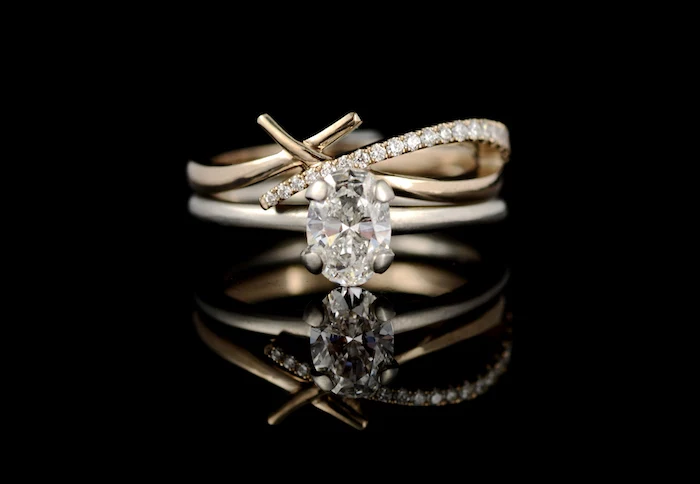
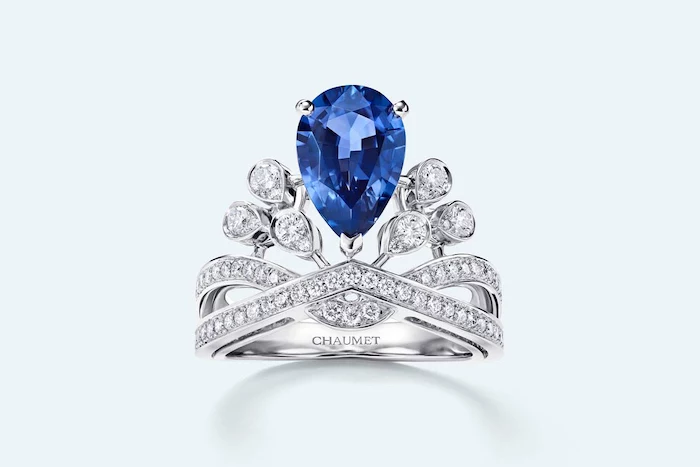
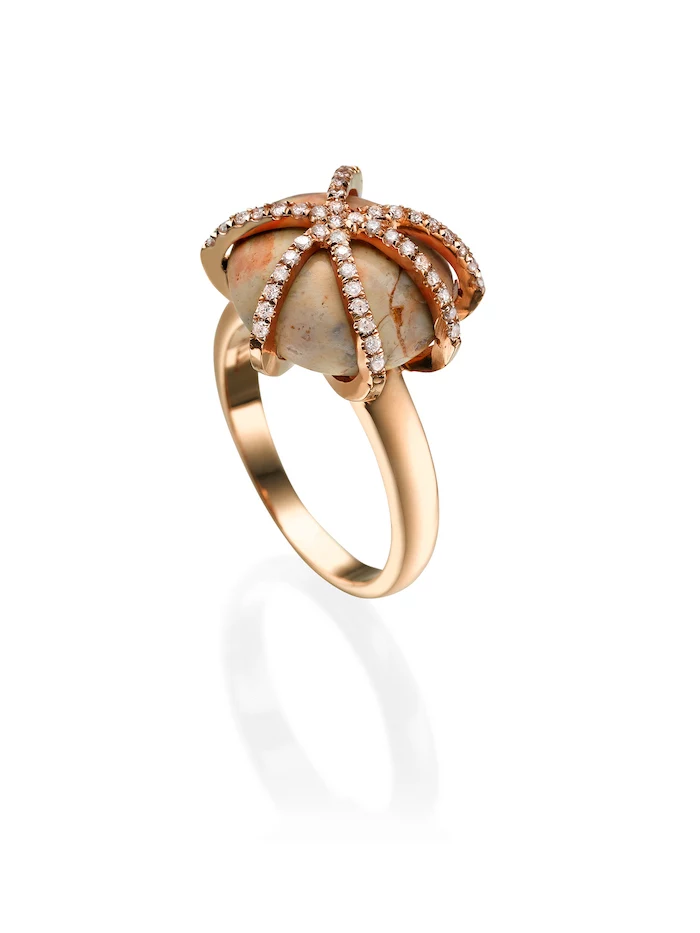
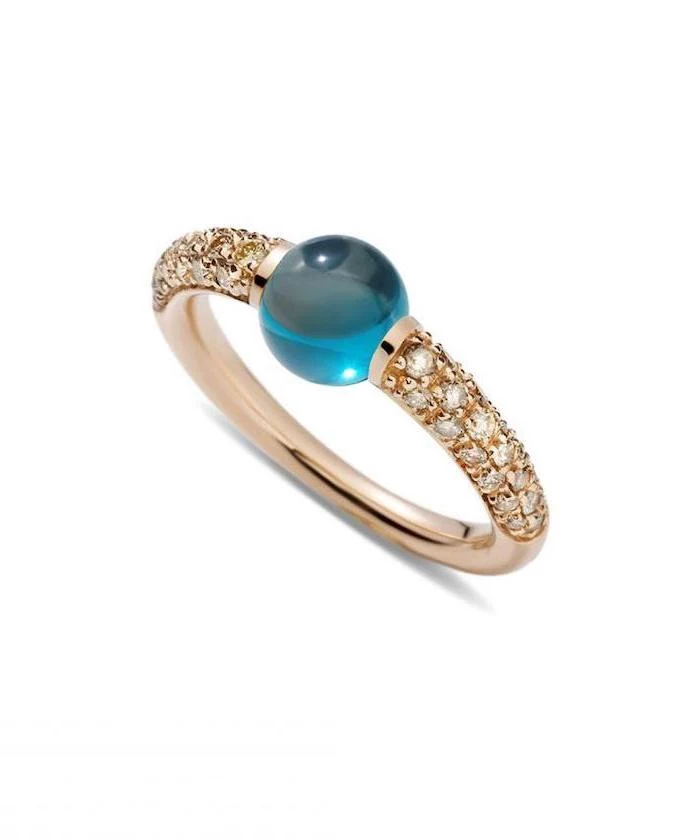
Think beyond the solitaire. A cluster ring, which uses several smaller diamonds set closely together to create the illusion of a single large stone, is a fantastic way to achieve a high-impact look on a more modest budget. Brands like Blue Nile and Brilliant Earth offer stunning, intricate cluster designs that maximize sparkle and coverage on the finger.
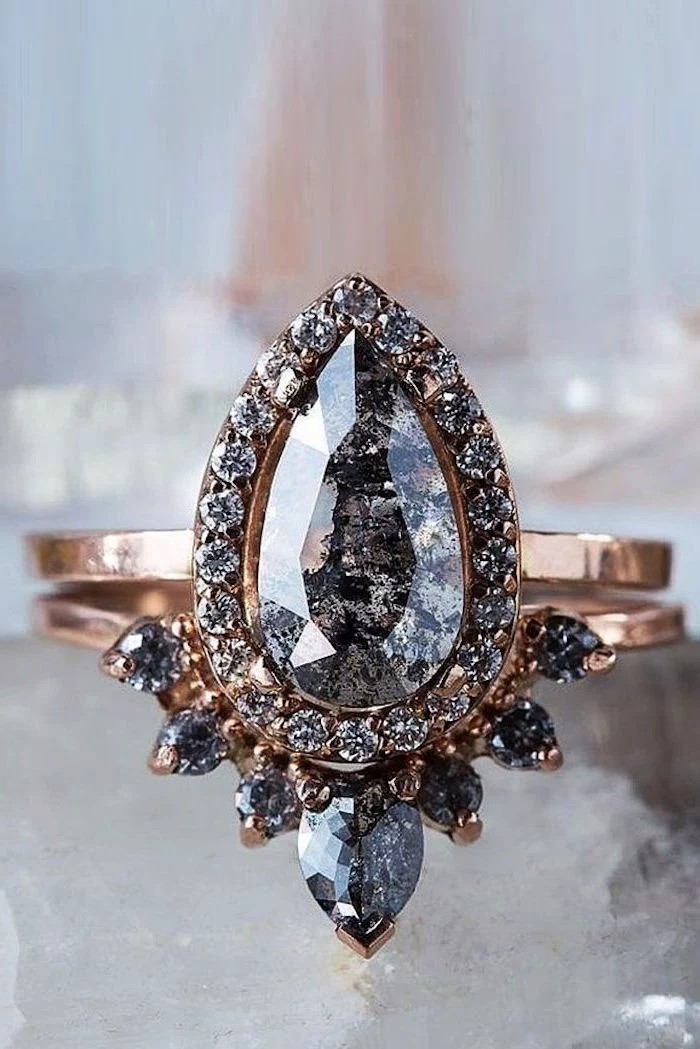
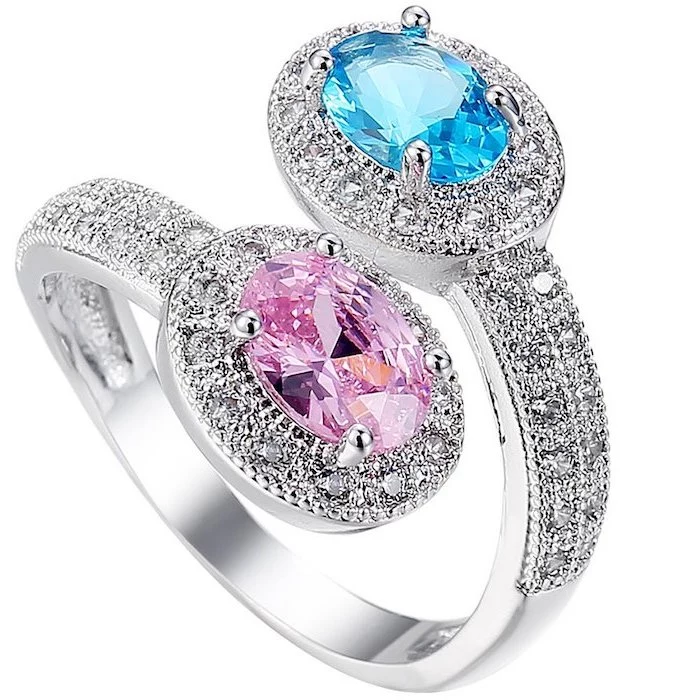
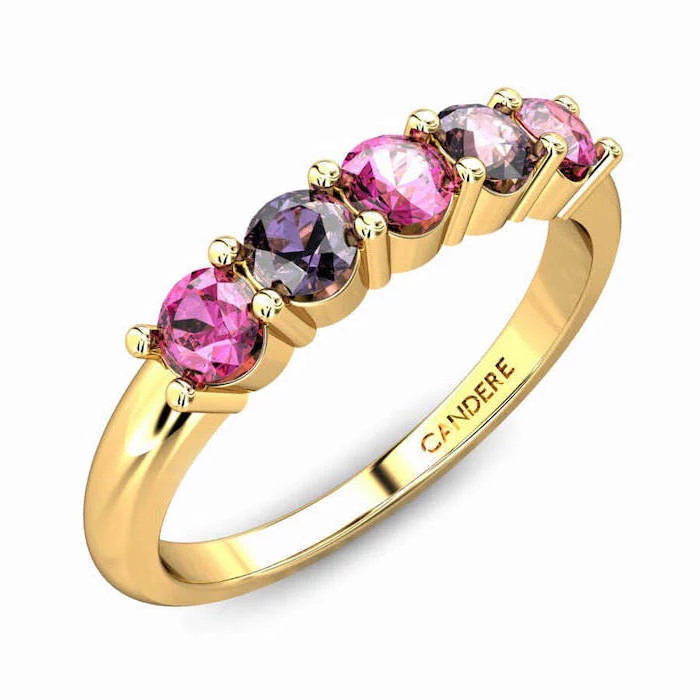
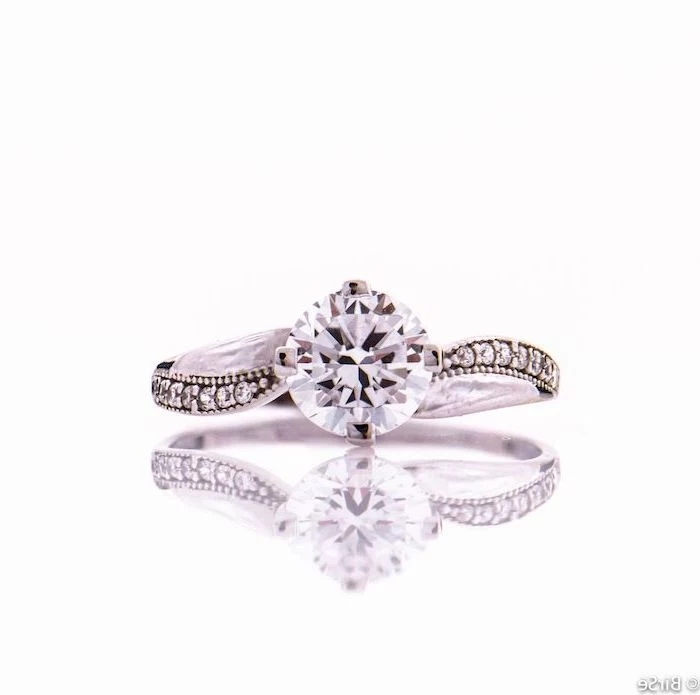
A GIA (Gemological Institute of America) report is not an appraisal of value, but a scientific blueprint of a diamond’s qualities.
It provides an unbiased assessment of the 4Cs (Cut, Color, Clarity, Carat Weight), plotting any inclusions and verifying its natural origin. Think of it as the stone’s pedigree—an essential document for verifying you’re getting exactly what you paid for, especially for diamonds over 0.50 carats.
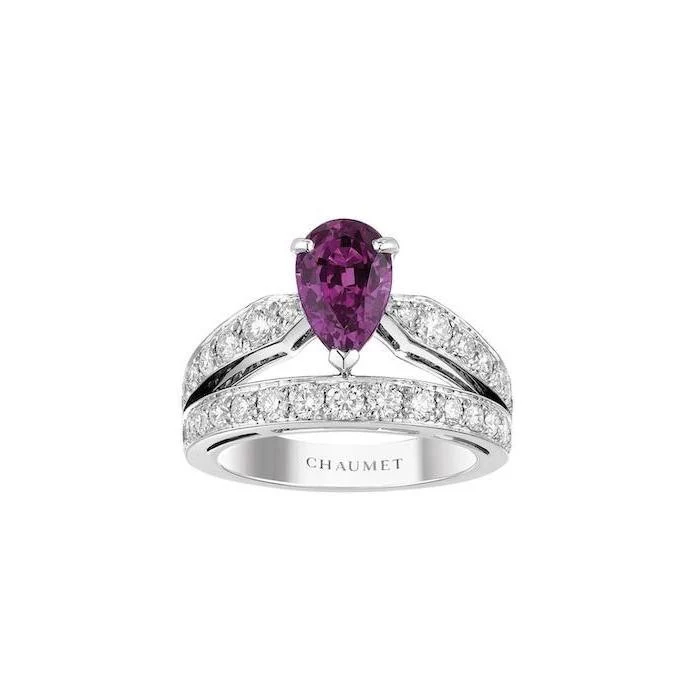
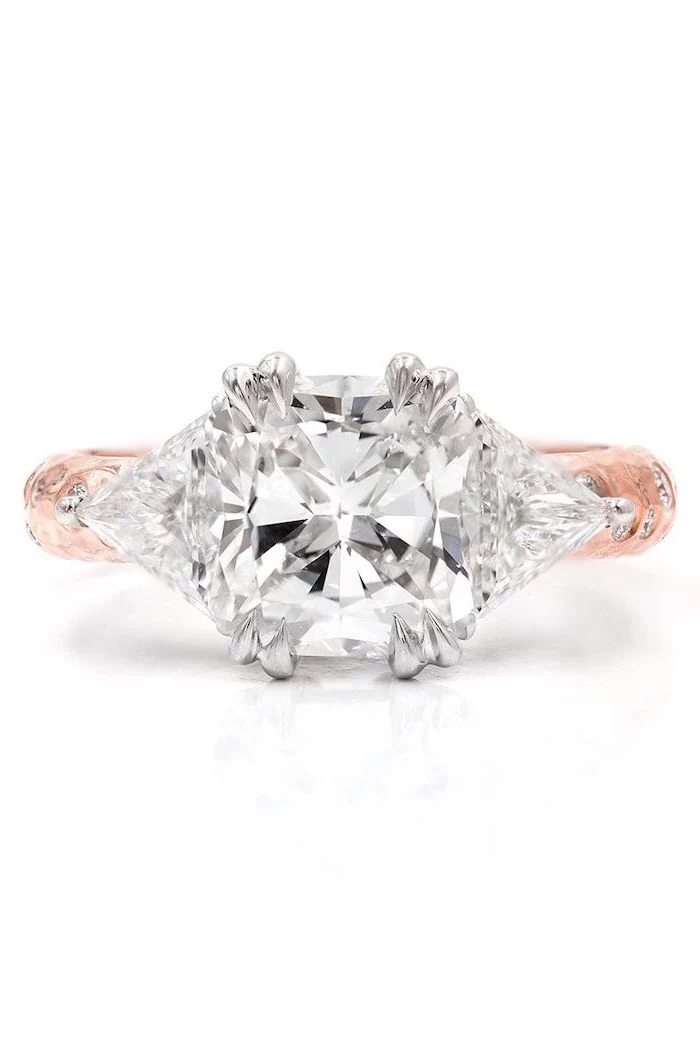
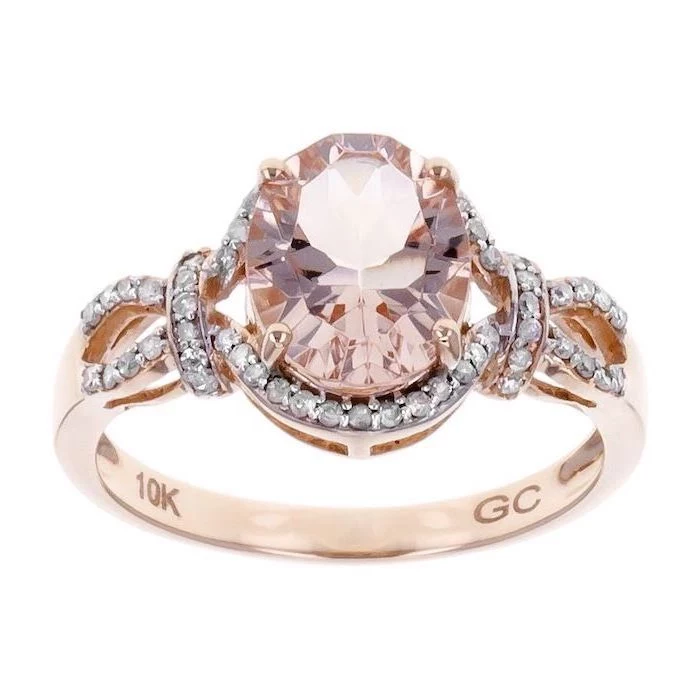
The ‘Toi et Moi’ (You and Me) ring, featuring two main stones set side-by-side, is surging in popularity. Symbolizing the union of two souls, this historic style has been modernized with unique stone combinations, like a pear-shaped diamond next to an emerald-cut sapphire. It’s a deeply romantic and stylish choice.
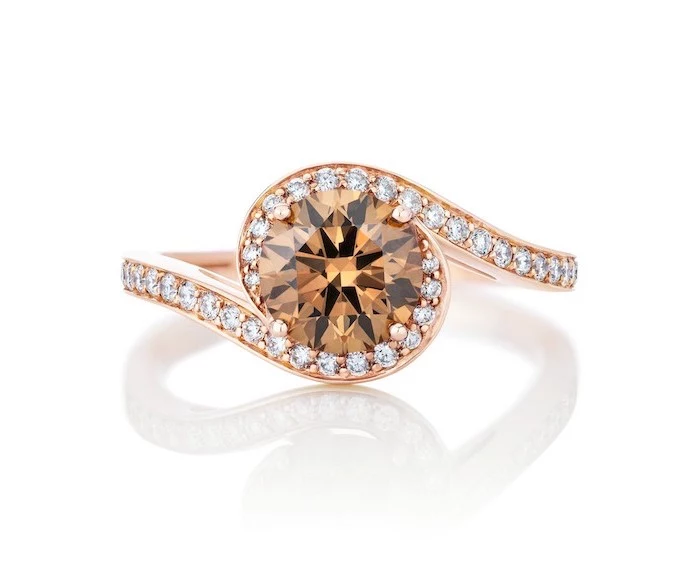
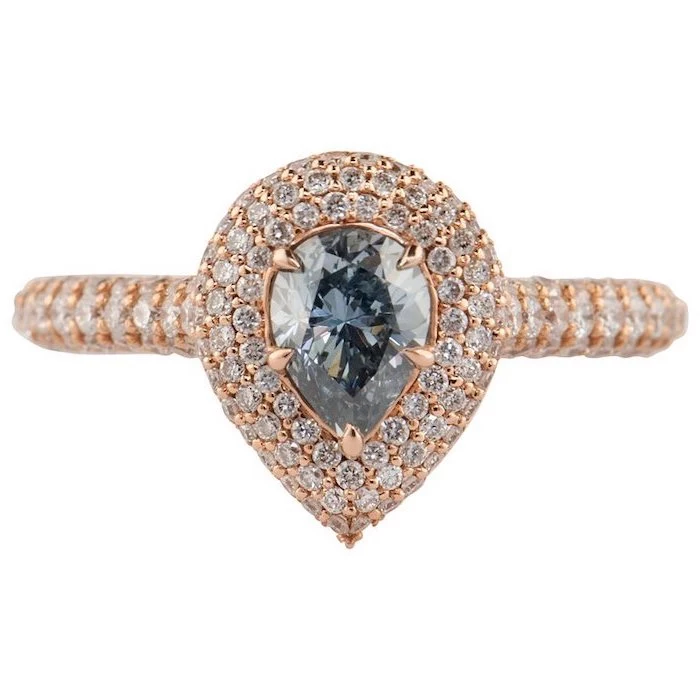
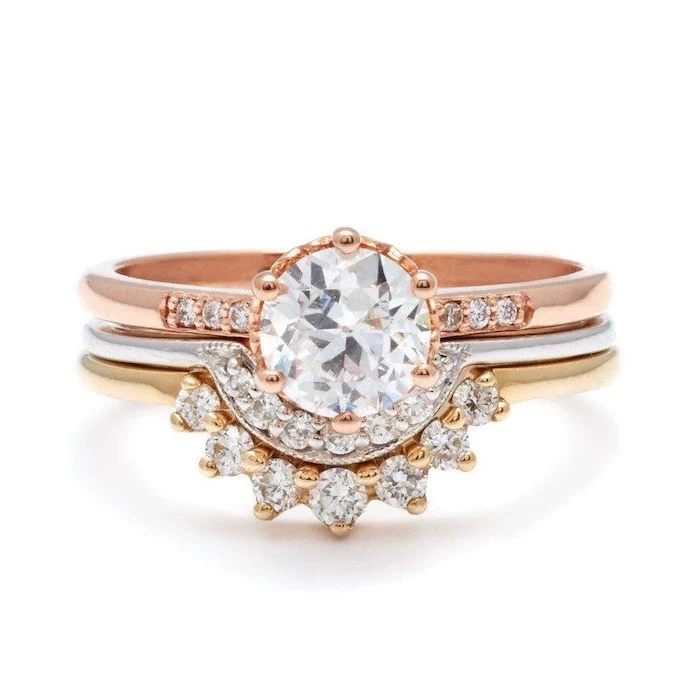
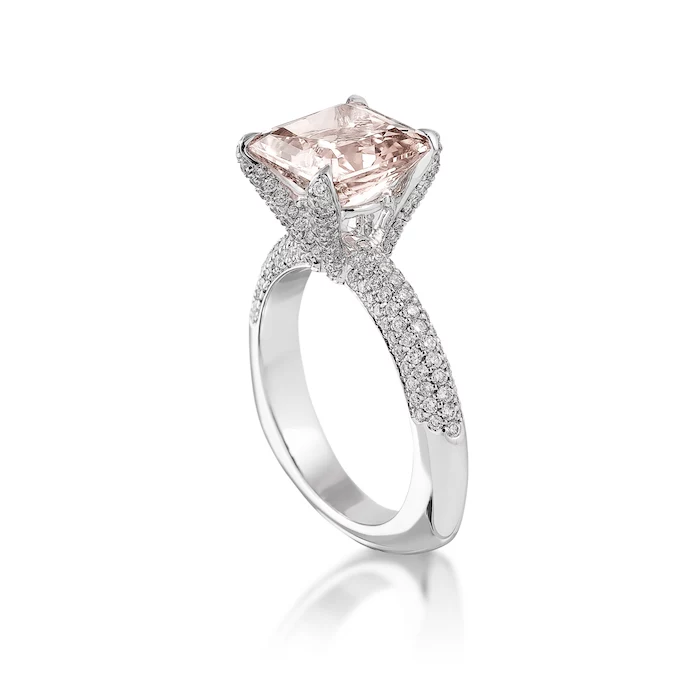
What’s the real difference between 14k and 18k gold?
It’s all about the ratio of pure gold to other metal alloys. 18k gold is 75% pure gold, giving it a richer, more saturated yellow color, but making it slightly softer. 14k gold is 58.3% pure gold, offering greater durability and resistance to scratches, making it a more practical choice for many. The color is a slightly lighter yellow. Your choice depends on whether you prioritize rich color or maximum durability.
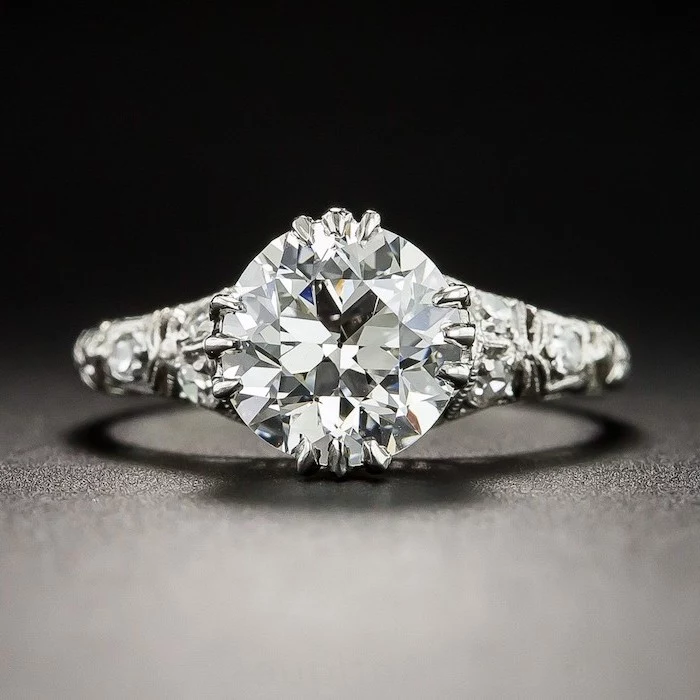
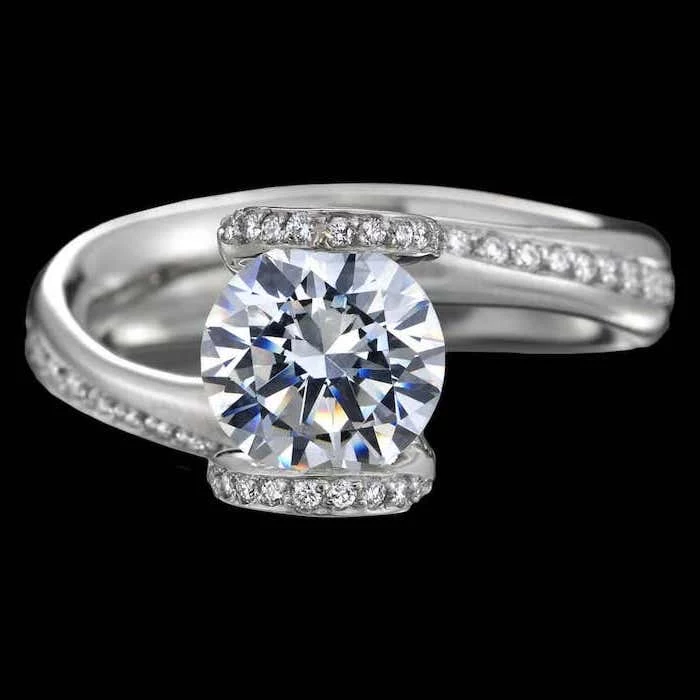
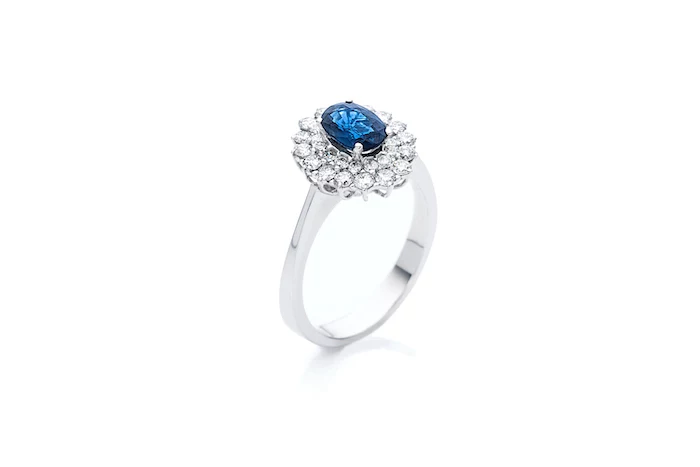
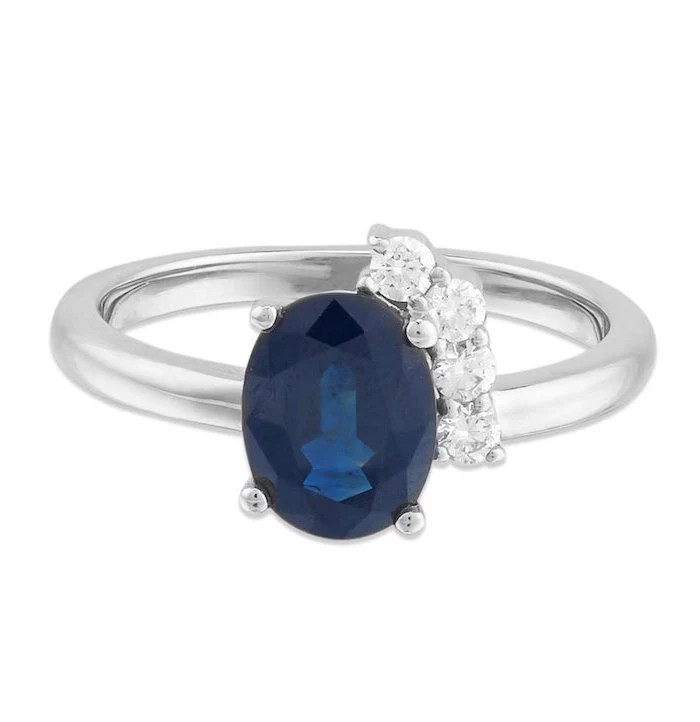
The essential last step: Get the ring insured. A comprehensive jewelry policy, either as a rider on your homeowner’s insurance or through a specialized company like Jewelers Mutual, covers loss, theft, and even damage. It’s a small annual cost that provides immense peace of mind for one of your most significant investments.
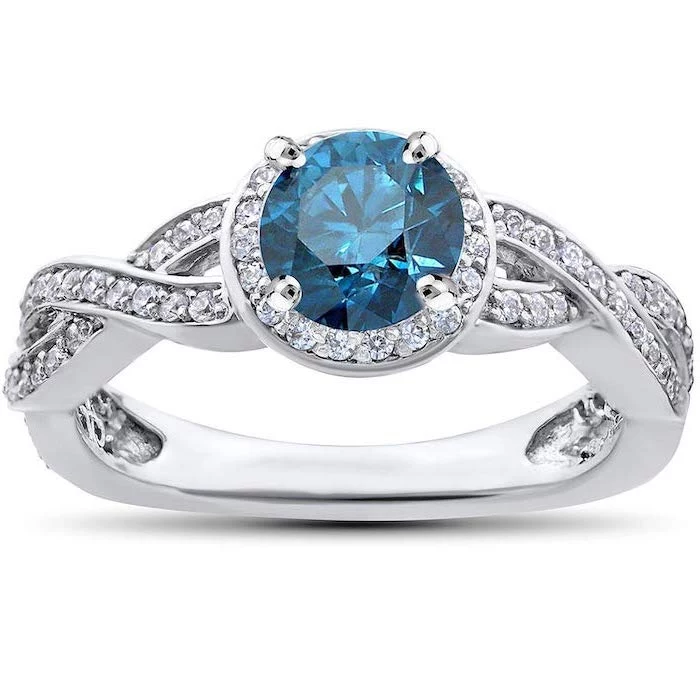
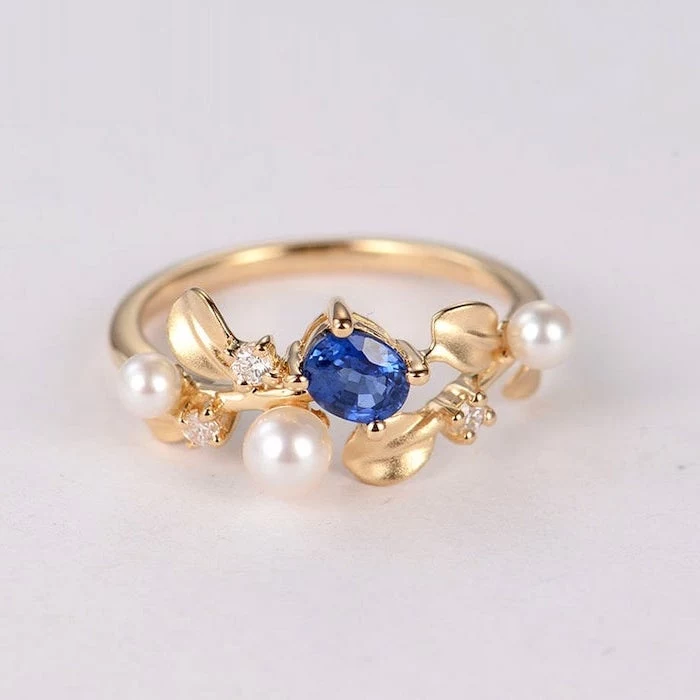
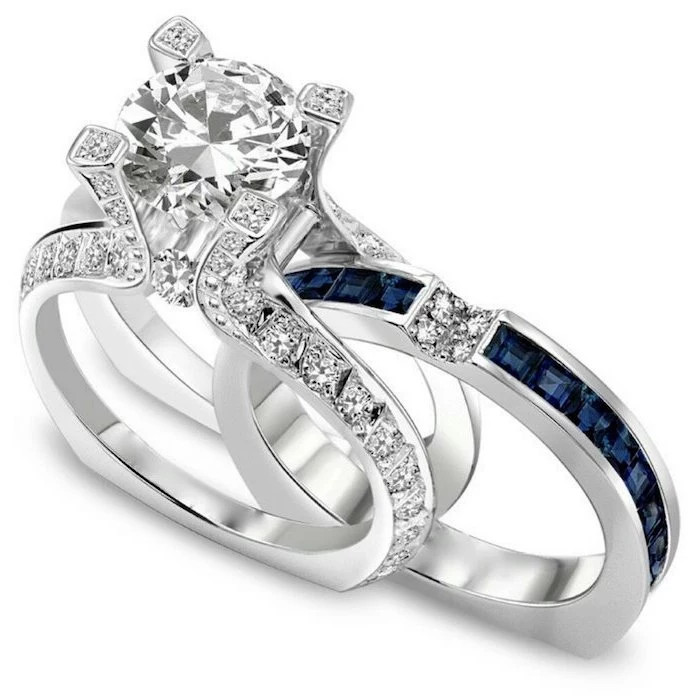
For those who love a perfectly imperfect look, salt-and-pepper diamonds are a stunning option. These natural diamonds are filled with unique black and white inclusions, creating a smoky, speckled, galaxy-like appearance. No two are alike, making them the ultimate choice for a truly one-of-a-kind ring.
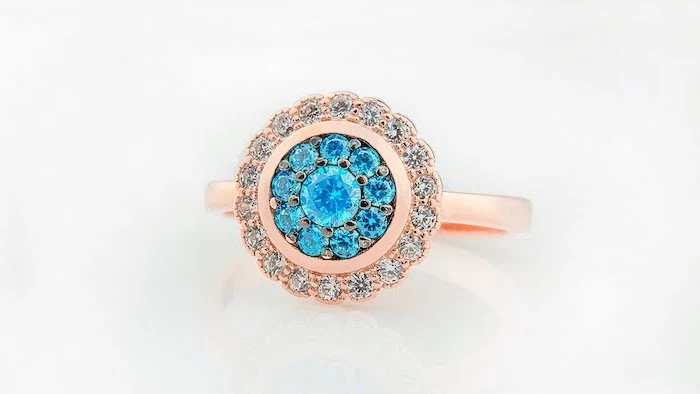
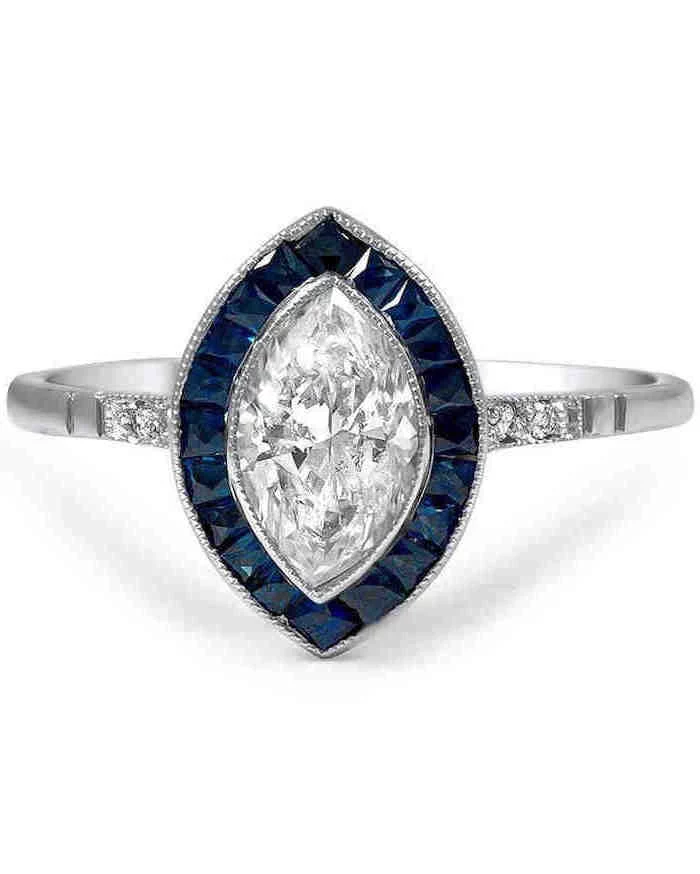
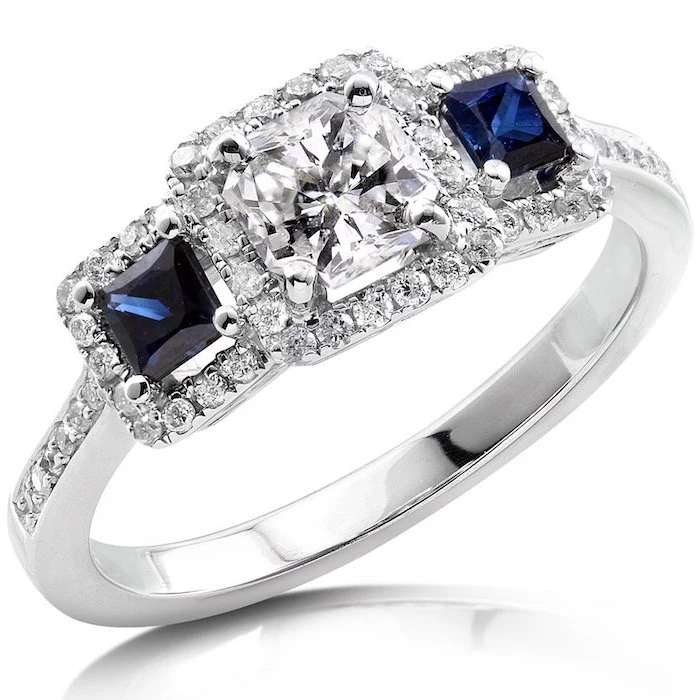
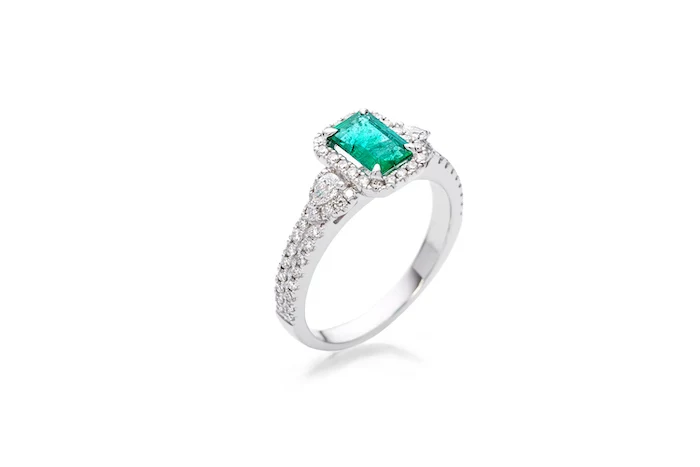
Sapphire: Ranks a 9 on the Mohs scale, second only to diamond. Its toughness makes it an outstanding choice for a lifetime of wear, famously demonstrated by Kate Middleton’s iconic blue sapphire ring.
Emerald: While beautiful, it’s a softer gem (7.5-8 on the Mohs scale). Most natural emeralds have inclusions (called a ‘jardin’), which can make them more susceptible to chipping. It requires more mindful wear.
For a worry-free colored stone, sapphire is the more durable heirloom choice.
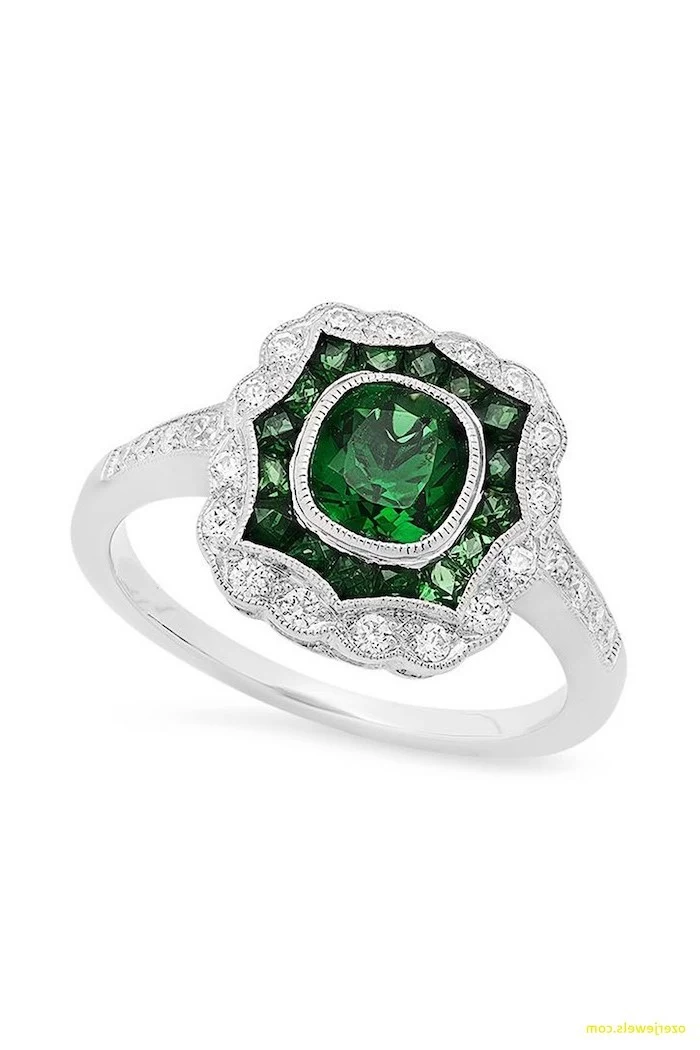
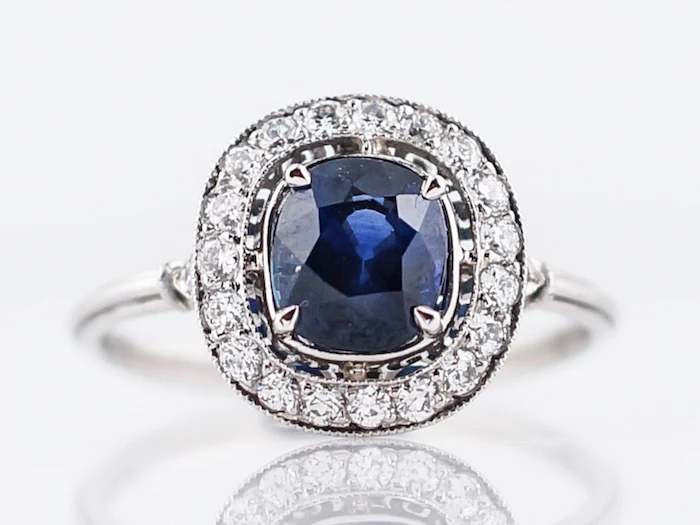
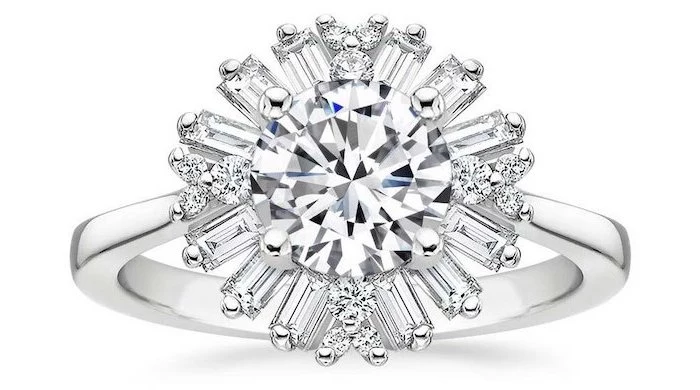
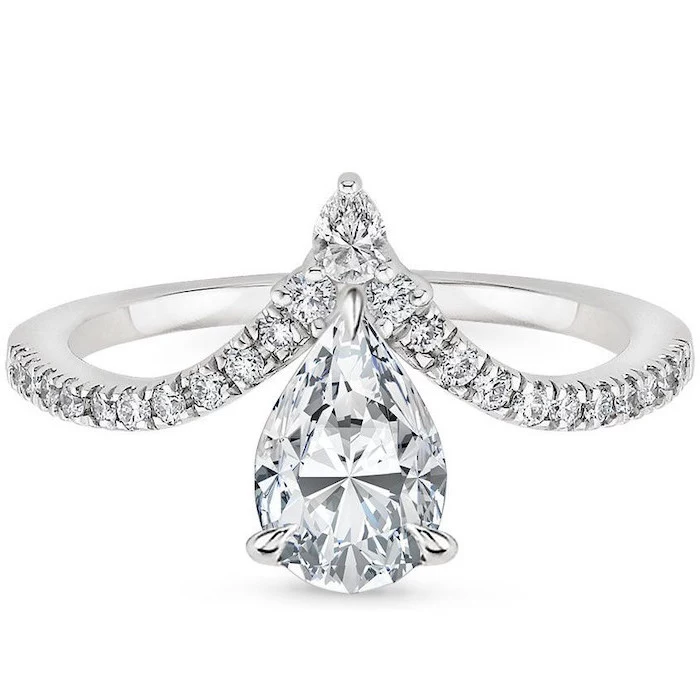
Don’t forget to consider how the wedding band will sit next to the engagement ring. Some elaborate settings, especially those with low-set stones or intricate baskets, may create a gap or require a custom-curved band to fit flush. It’s wise to try on a simple band with your final contenders to ensure a comfortable, cohesive final look.
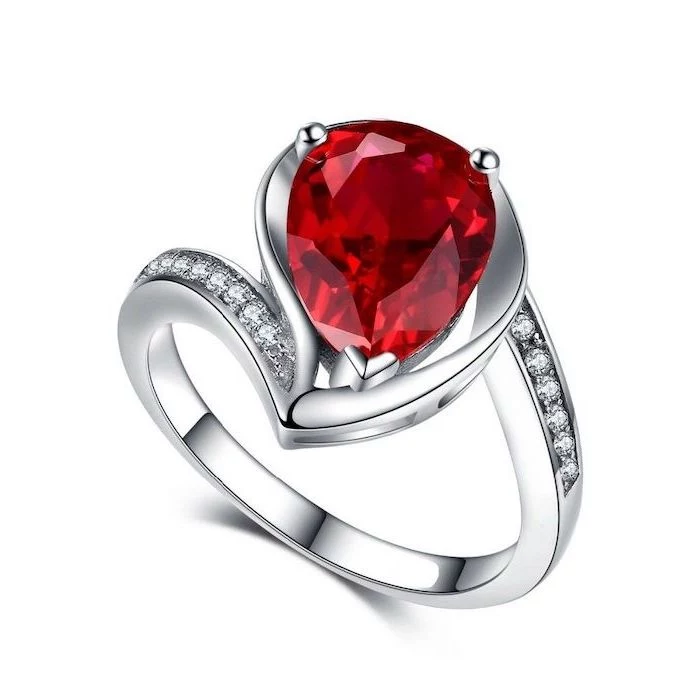
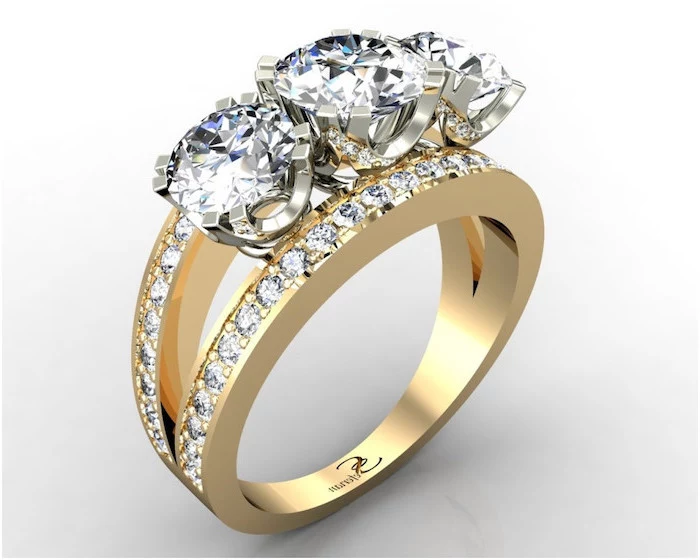
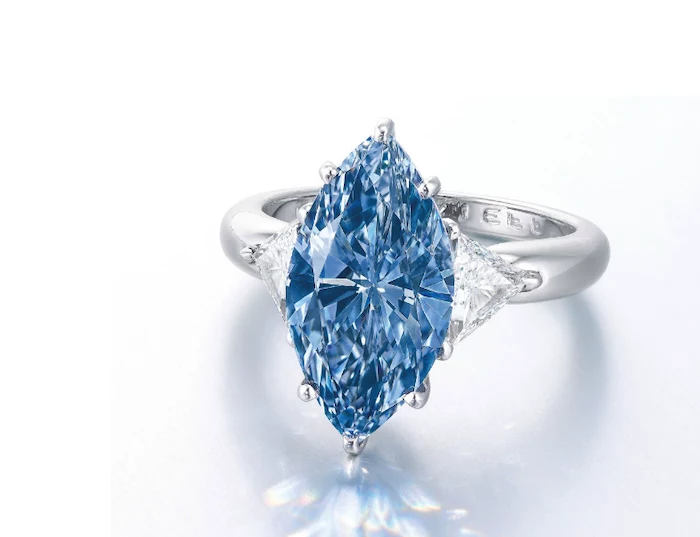
The word ‘diamond’ comes from the ancient Greek word ‘adamas,’ which means ‘unconquerable’ or ‘invincible’—a fitting name for the hardest natural substance on Earth.
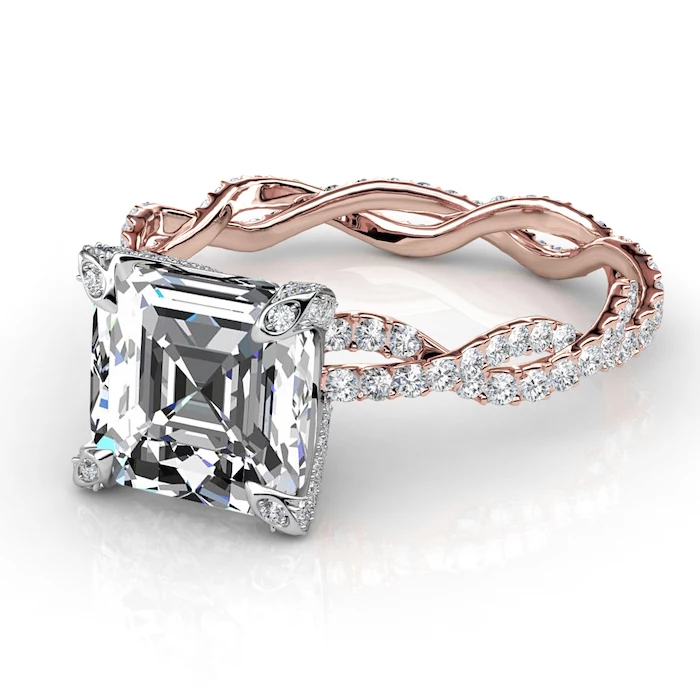

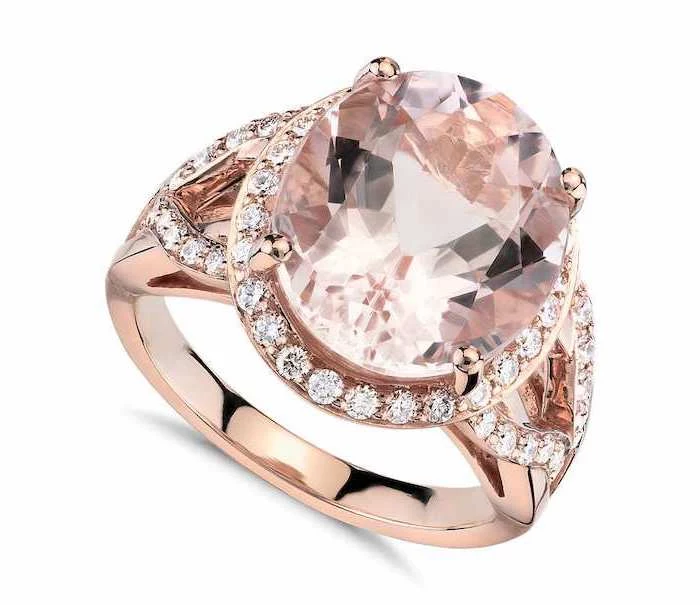
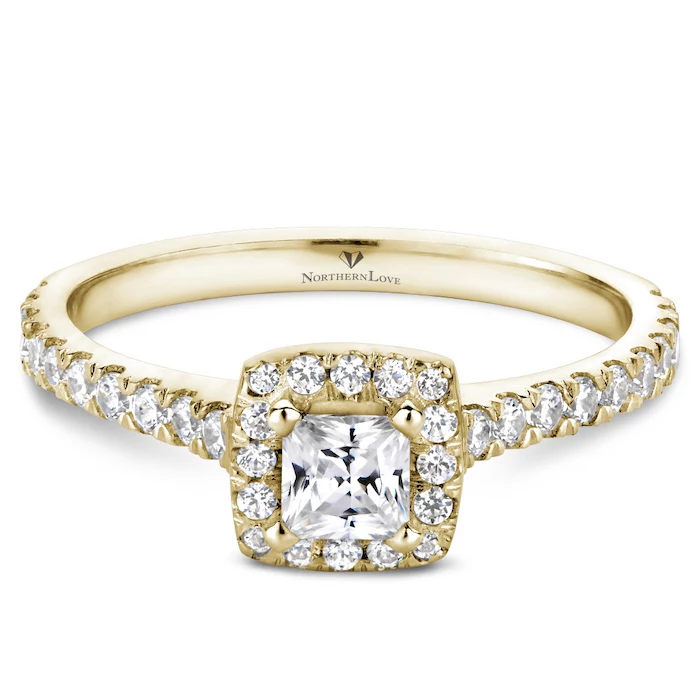
How can I secretly find out their ring size?
The sneakiest, most reliable method is to ‘borrow’ a ring they already wear on their ring finger and take it to a jeweler to be measured. If they don’t wear rings on that finger, try one from another finger and note which one. A jeweler can often make an educated guess. When in doubt, it’s always easier to size a ring down than it is to size it up.
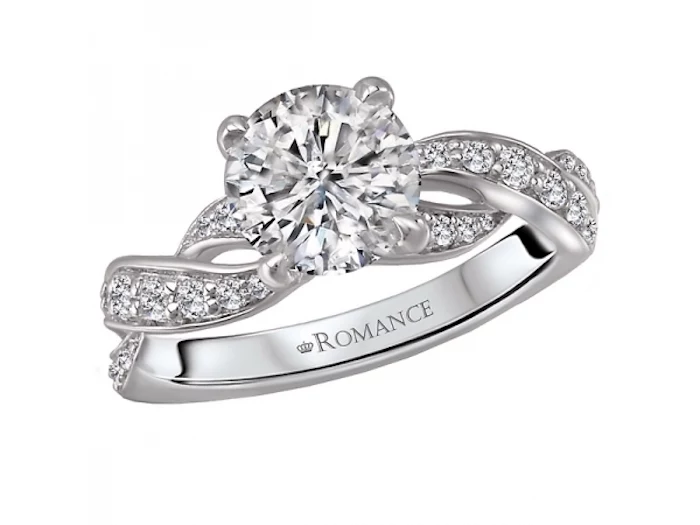
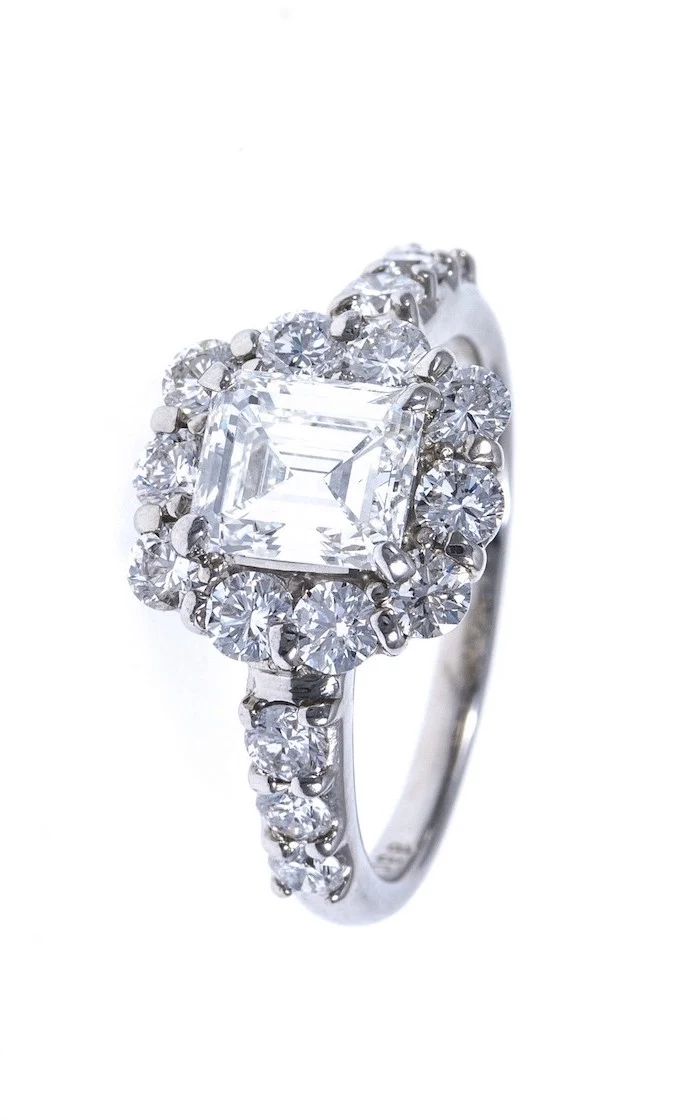
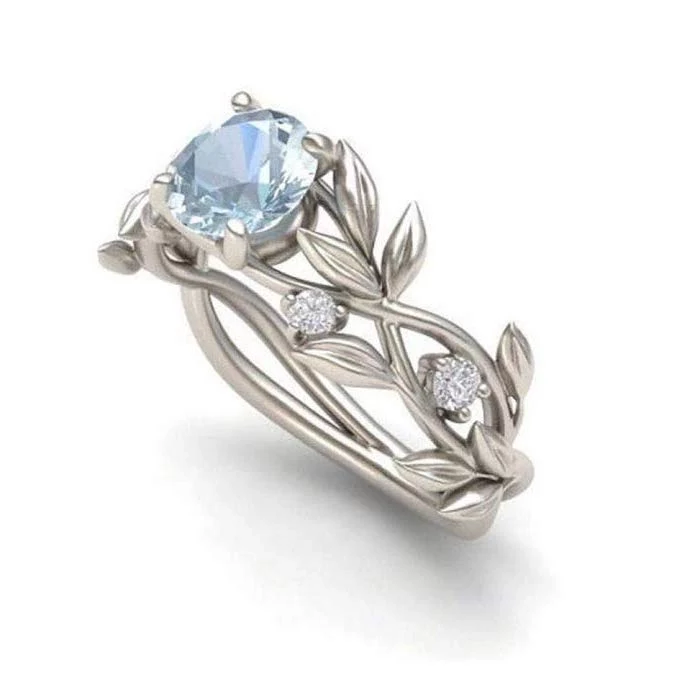
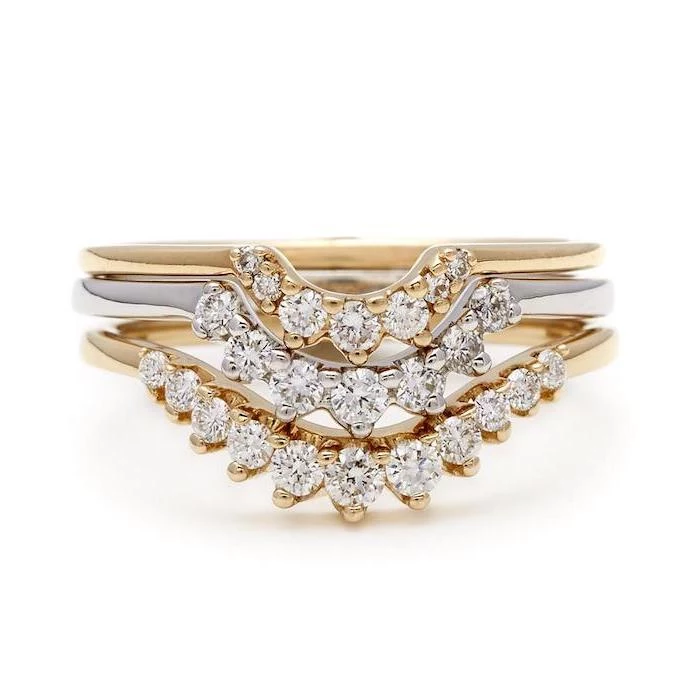
An ‘antique’ cut diamond, like an Old European or Old Mine cut, was shaped by hand in an era before modern precision technology. These stones were designed to sparkle under candlelight, giving them a warmer, deeper, more romantic glow compared to the fiery brilliance of a modern round brilliant. They trade sharp, splintery light for soft, chunky flashes of color.
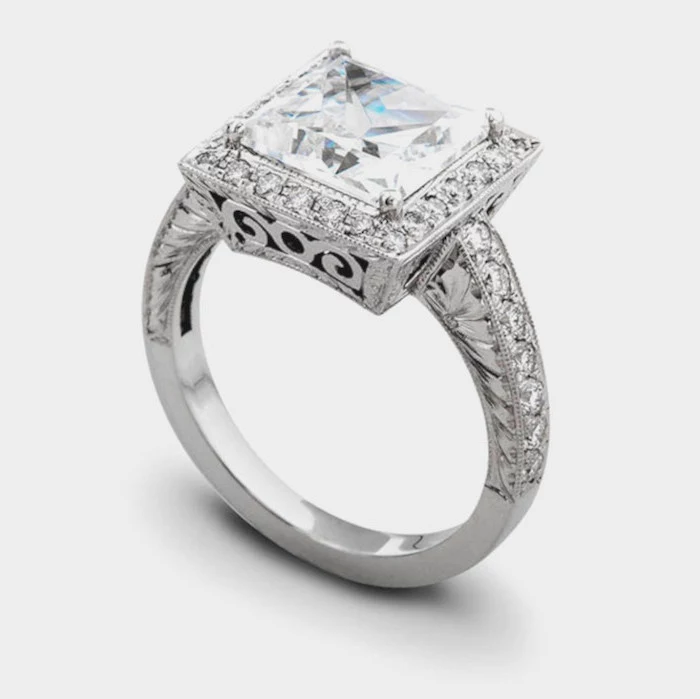
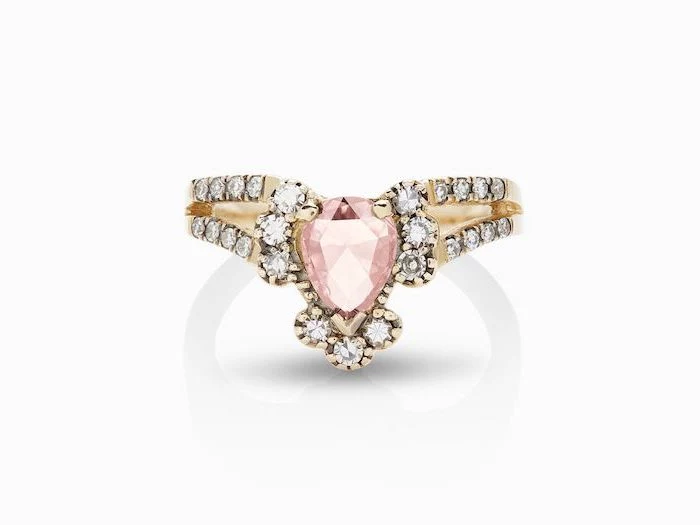
To ensure your ring lasts a lifetime, know when to take it off. Always remove it before:
- Working out at the gym (weights can bend the band or damage settings).
- Swimming in pools or oceans (chlorine can damage alloys and cold water can make fingers shrink).
- Cleaning with harsh chemicals like bleach.
- Heavy gardening or DIY projects.

